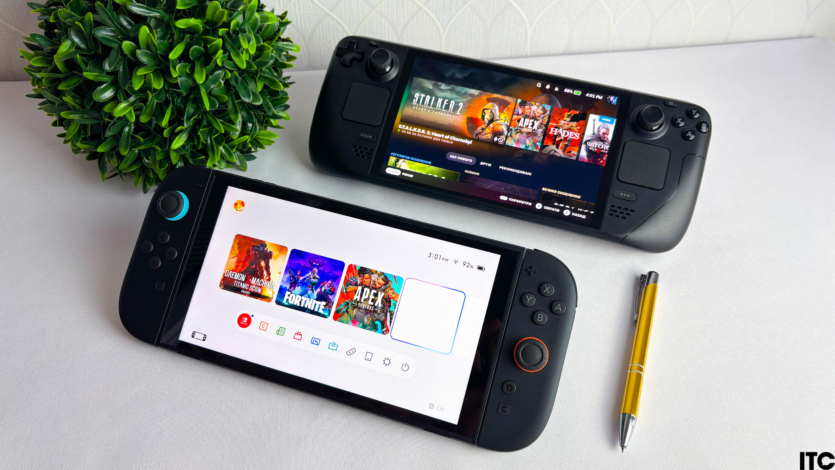
With the release of the first Switch, Nintendo brought back the fashion for portable consoles. And so much so that it sold beyond 150 million consoles in 7 years. An unprecedented success, isn’t it? Other manufacturers looked at the opening of a forgotten market and thought about creating their own “portables”.
Valve was the first to come out with Steam Deck, offering its own SteamOS shell based on ArchLinux. Gamers and enthusiasts who did not really want to lose their game collection began to develop the platform. A few years later, an updated version of Steam Deck OLED was released with a new, higher-quality 90 Hz display and a larger battery.
Nintendo did not lag behind a few months ago by releasing a new generation of Switch 2. The new hardware with DLSS technology has become much more powerful than the first generation. The size of the console was increased for better ergonomics. 120 Hz FullHD screen should show a smooth image in games. We made magnetic Joycons for more convenience.
The only battle for potential buyers was asking for it. Today we will compare the two most favorite portable consoles of gamers around the world: Nintendo Switch 2 and Steam Deck OLED.
Content
Technical characteristics Nintendo Switch 2 and Steam Deck OLED
| Nintendo Switch 2 | Steam Deck OLED | |
| Processor | 8-core ARM Cortex-A78C | AMD APU, Zen2, 4 cores / 8 threads, 2.4-3.5 GHz |
| Video card | NVIDIA Ampere | 8 RDNA 2 CU, up to 1.6 GHz |
| RAM | 12 GB LPDDR5X | 16 GB LPDDR5 |
| ROM | 256 GB UFS 3.1 | 512 GB NVME SSD |
| Display | 7.9″ LCD (279 ppi), 120 Hz, HDR10, VRR, 97.6% P3, 400 nits | 7.4″ OLED (204 ppi), 90 Hz, HDR, 110% P3, 1000 nits |
| Wireless interfaces | Wi-Fi 6, Bluetooth | Wi-Fi 6E, Bluetooth 5.3 |
| Wired interfaces | 2 x USB 3.2 Type-C, 1 x 3.5 mm audio jack | 1 x USB 3 gen2 Type-C, 1 x 3.5 mm audio jack |
| Docking station wired interfaces | 2 x USB 2.0, 1 x HDMI 2.1, Gigabit Ethernet | Available for purchase separately |
| Battery | 5,220 mAh (19.74 W*h) | 50 W*h |
| Power supply and cable |
60 W, 1.3 m | 45 W, 2.5 m |
| Operating system | Nintendo OS | SteamOS |
| Dimensions | 272 x 116 x 13.9 mm | 298 x 117 x 49 mm |
| Weight | 534 г | 640 г |
Looking at the characteristics, each of the consoles has its advantages. Switch 2 primarily stands out for its larger display, its frequency, and resolution. Steam Deck takes the quality of the OLED matrix.
The cases of the two consoles have a plastic body. They also show almost no signs of use. The only element that immediately collects fingerprints is the glossy surface of the display. It is better to buy a film for minimal protection.
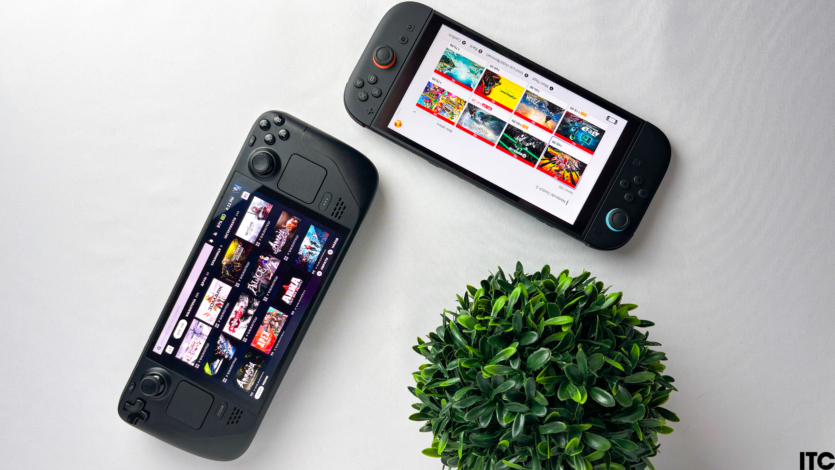
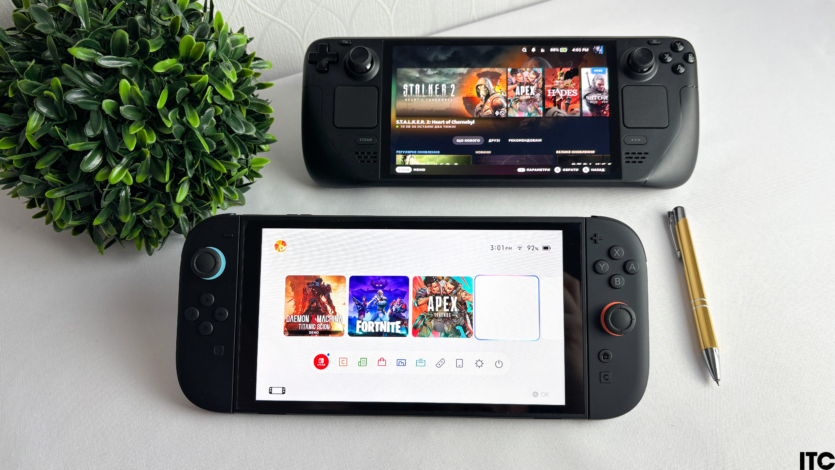
The amount of built-in memory is important for users: the more memory, the more games you can fit. Deck offers 512 GB or 1 TB. The Switch 2 has 256 GB, which is more than the Switch 1 (64 GB), but doesn’t seem like a killer feature. You can use physical cartridges, but not all of them will have a game installed.
The main advantage of the Switch 2 is its much smaller size compared to the Deck. After removing both Joy-Cons, it seems that we are not looking at a console, but a regular small tablet. It also weighs 100 grams less, which should give it an advantage over its heavier opponent. We’ll compare it in the next section.
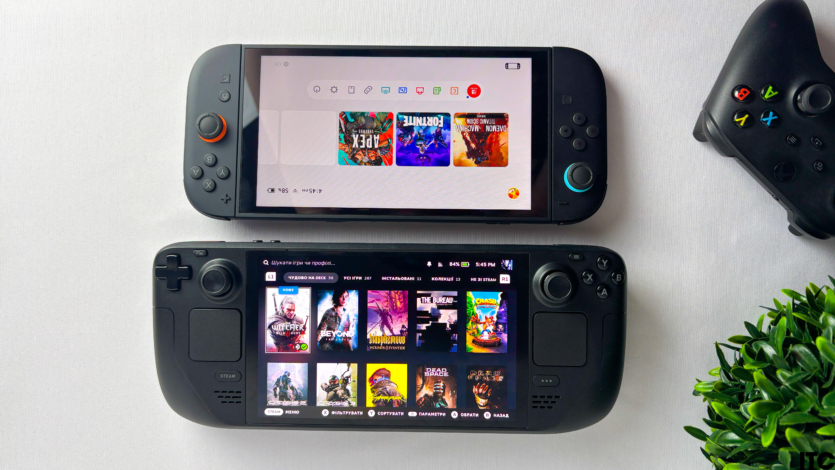
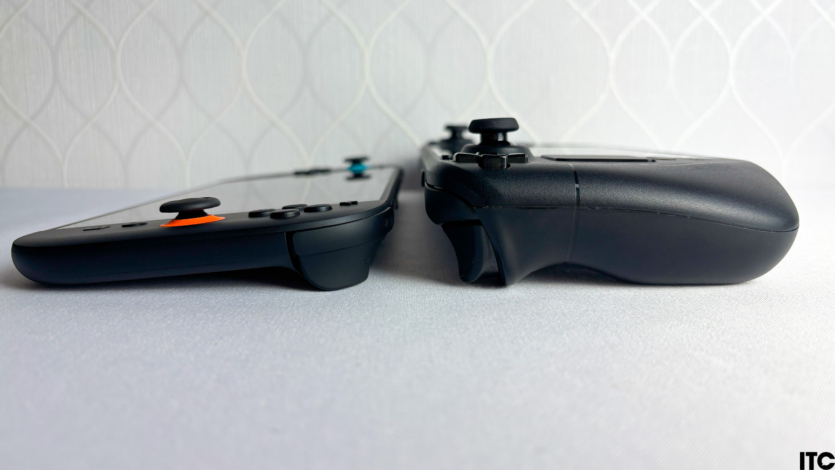
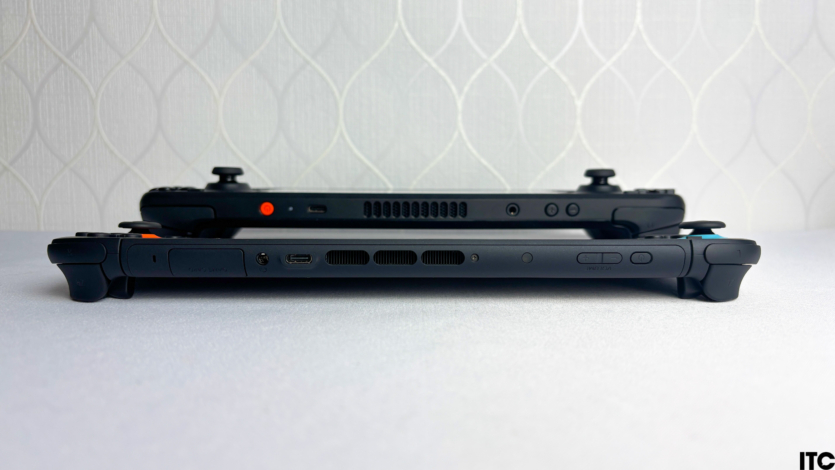
The bundles of both consoles differ significantly. The Deck comes with a sturdy dark storage bag and a charger, while the Switch 2 bundle looks more diverse: two accessories for both Joy-Cons, a power supply, an HDMI cable, and a dock for connecting to a TV/monitor.
Design and ergonomics
Portable consoles are a separate type of electronics for gamers. They are the main buyers. The usability will be different for each of them, so manufacturers have to “guess” the desires of customers. As you can see, Nintendo and Valve have taken different paths.
Nintendo Switch 2 continues the idea of its predecessor — a thin and convenient device to carry around. The console measures 272x116x13.9 mm. Yes, it has become much bigger, but looking at other portable devices, it still doesn’t seem very big. Without the Joycons, the console resembles a tablet that is a bit thick by modern standards.
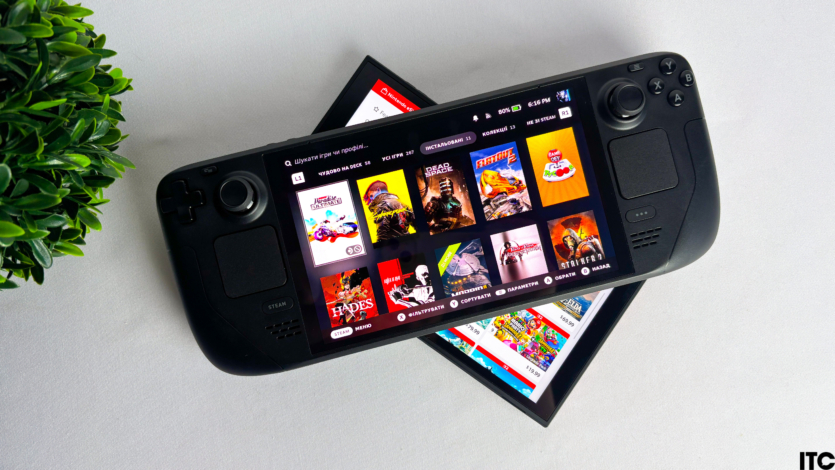
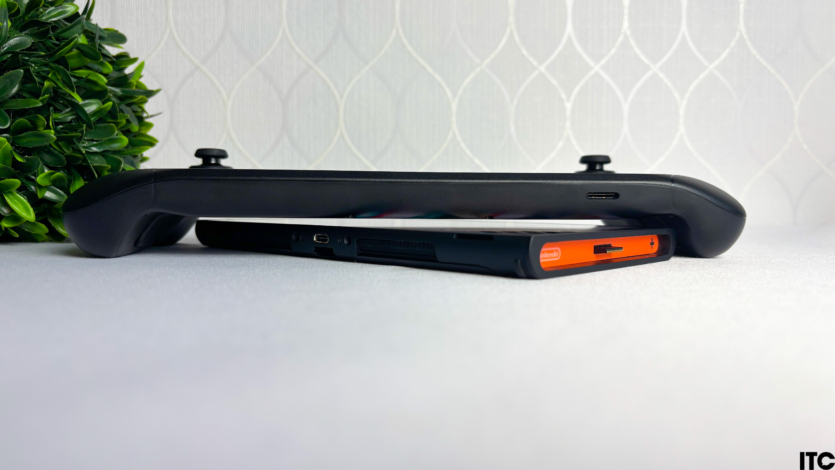
Steam Deck OLED showed a completely different design — the idea of expanding the usual console gamepad. In general, Valve decided to enlarge the first Switch to accommodate sufficient hardware and battery performance replace the Joy-Con with a much more comfortable grip for gamepads. In addition, they added rear keys like Pro controllers and two touchpads for convenience in strategies or using the OS.
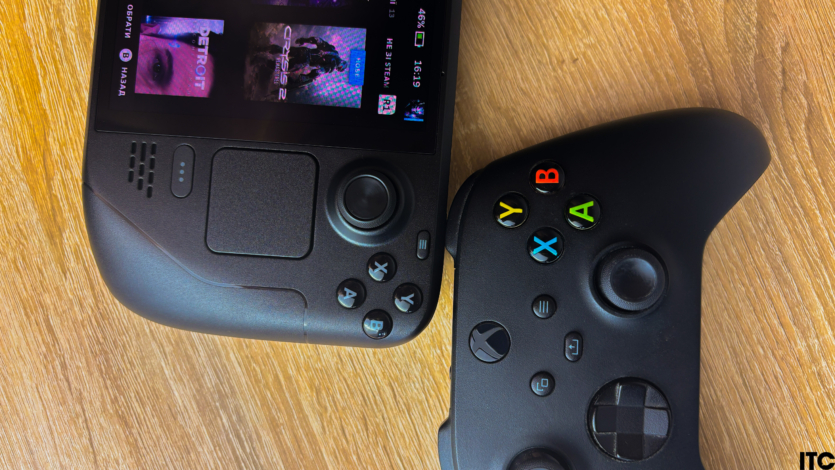
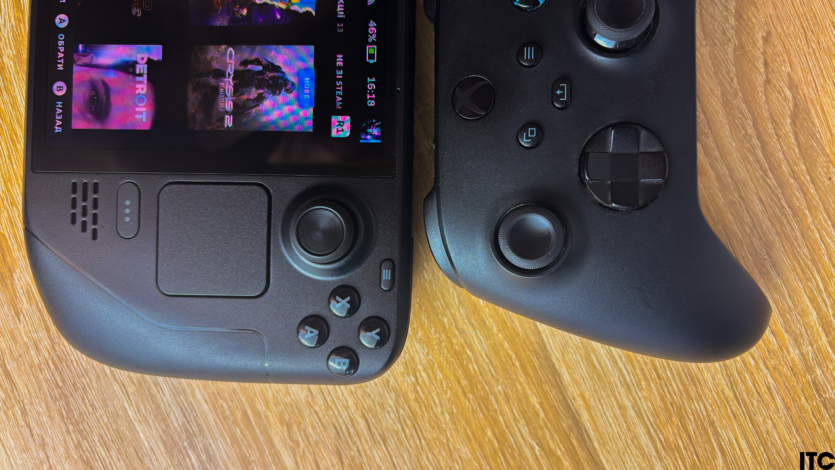
Switch 2 weighs 534 grams. It doesn’t feel heavy in the hands, unlike the 640 grams of the Steam Deck OLED and its dimensions of 298x117x49 mm. At first glance, both consoles seem a bit heavy due to the different grip. When we pick up the Deck, we feel the heaviness in our hands, but without the feeling of the center part. With Switch 2, the situation is the opposite: the two Joy-Cons are light on their own, but the “tablet” pulls down. In simple terms, the point of gravity is different, so you need to get used to each one. Nintendo Switch 2 is definitely better for children.

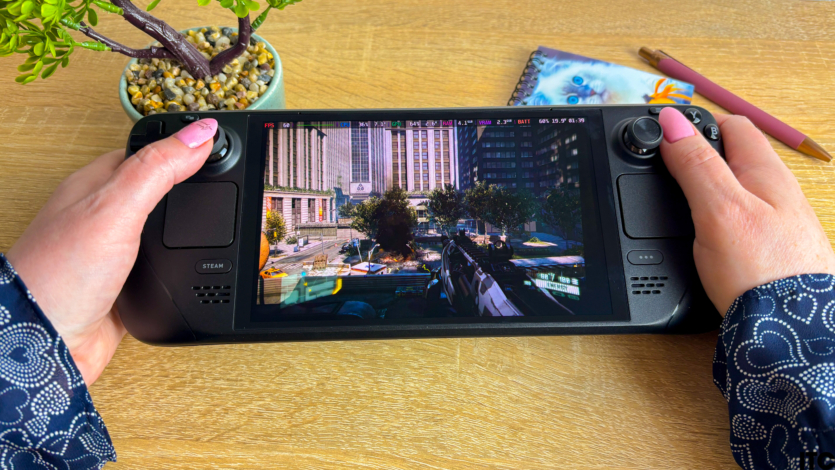
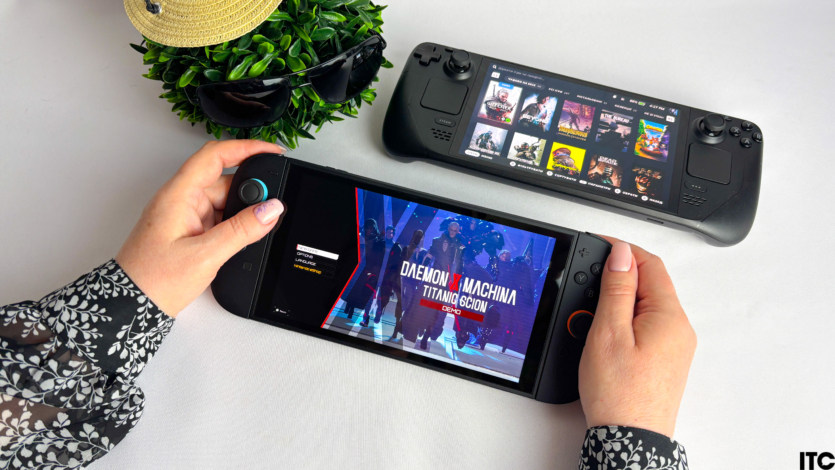
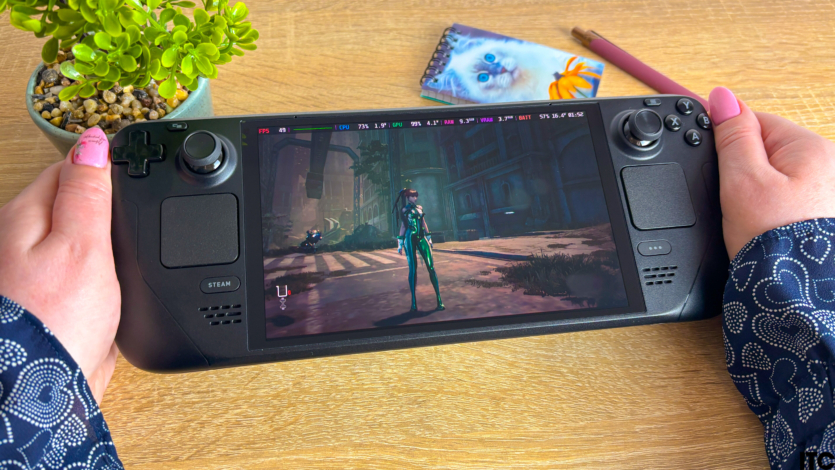
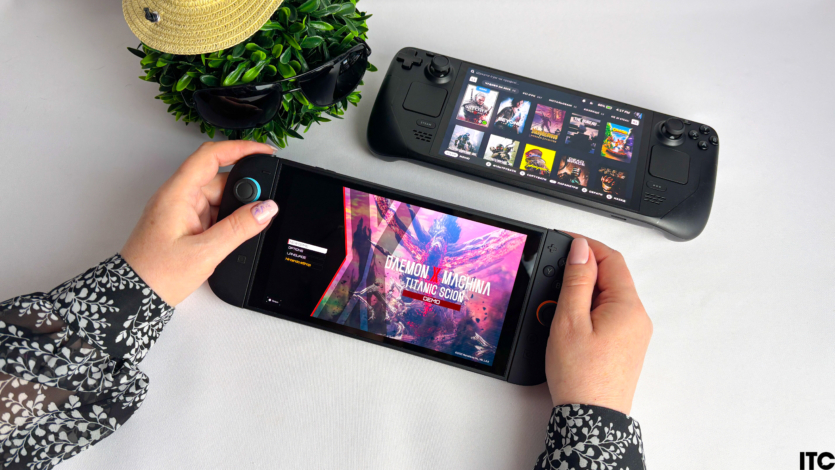
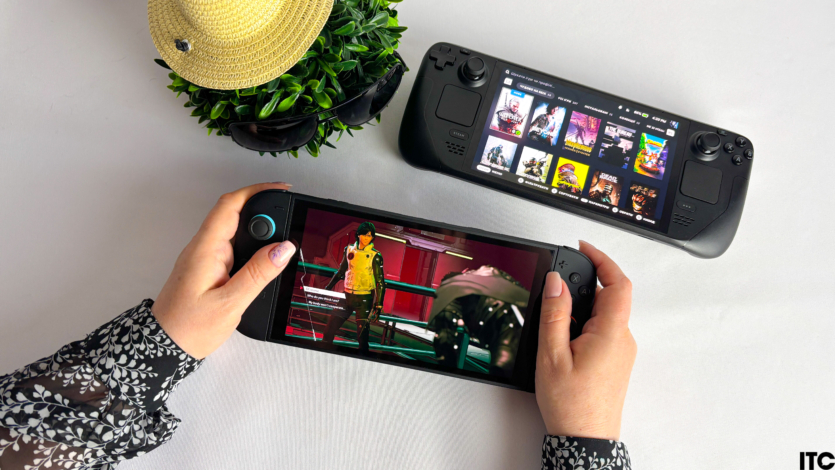
The ventilation system in consoles consists of one fan and a copper tube. The air is taken for each of them in a different place: Switch 2 at the bottom end and Steam Deck OLED — at the back. Both solutions cover different air intake scenarios. Placing it on the end allows you to put the console on the bed without any problems. The problem will arise if you place the console vertically thanks to the built-in stand. Then you can use a cloth to cover the air intake holes. The location of the air intake on the back is not a good solution. However, the Steam Deck OLED has a good height thanks to the side handholds, so there shouldn’t be a problem with cooling.
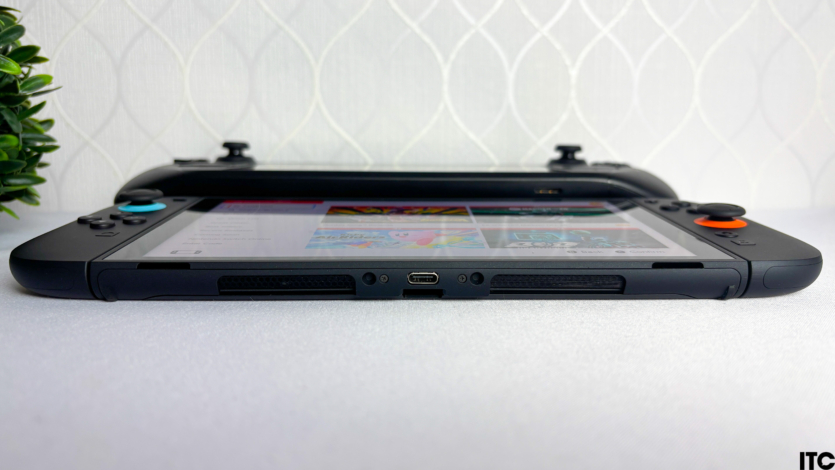
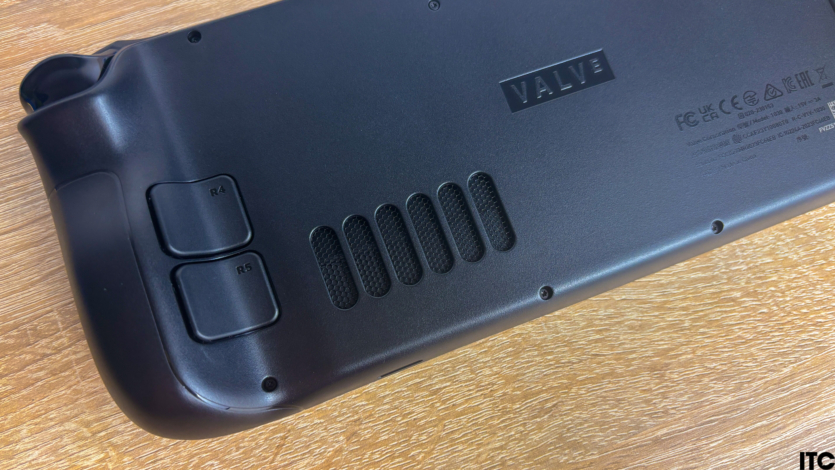
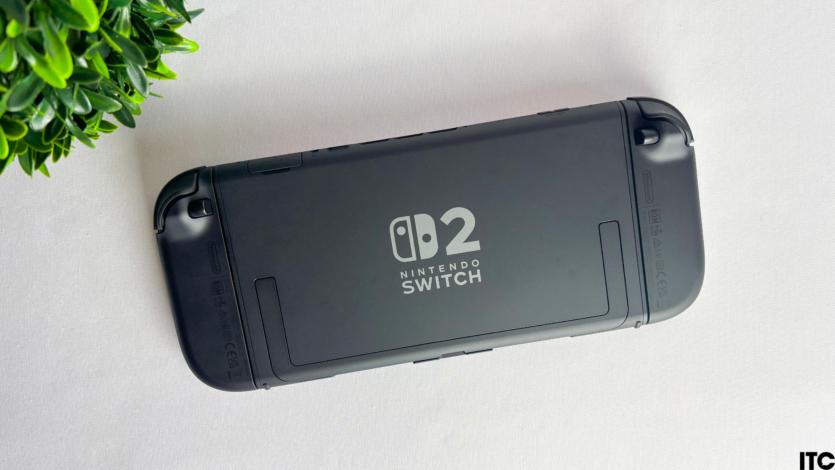
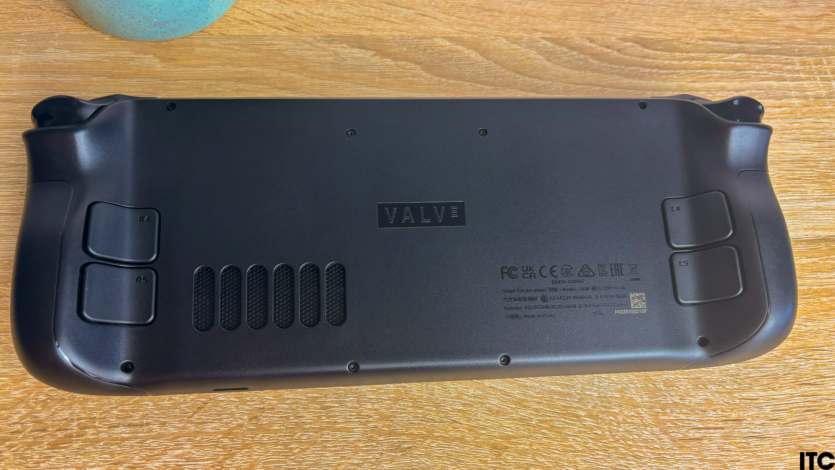
On the top are the console controls and heat dissipation holes. A little attention during use is required when you press the Sleep key. On Switch 2, it is located near the volume control, so you can accidentally press one of them. In Steam Deck, when you press the USB connector, you can’t reach it without changing your grip.


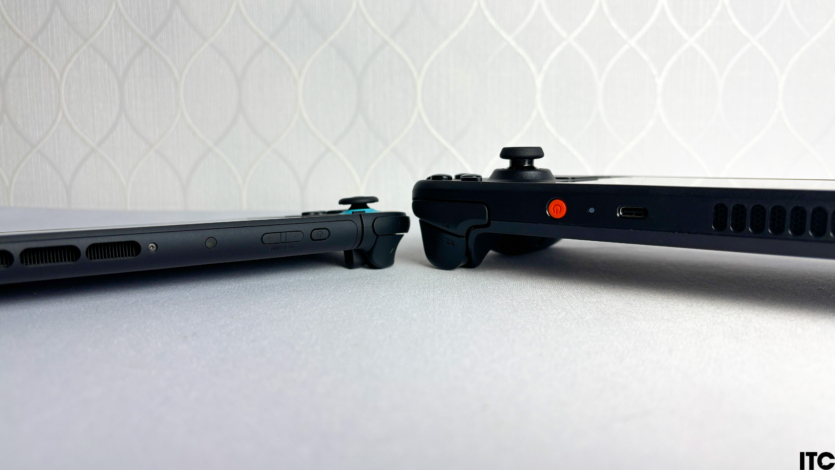
Two Joy-Сon’s can be combined into a single design that resembles a gamepad. It is very difficult to enjoy this design. Your palms grip the lower part, which is comfortable, but the controls are higher and you need to reach out with your thumb. It’s better to just hold them in separate hands, bundled attachments with straps will help with this.
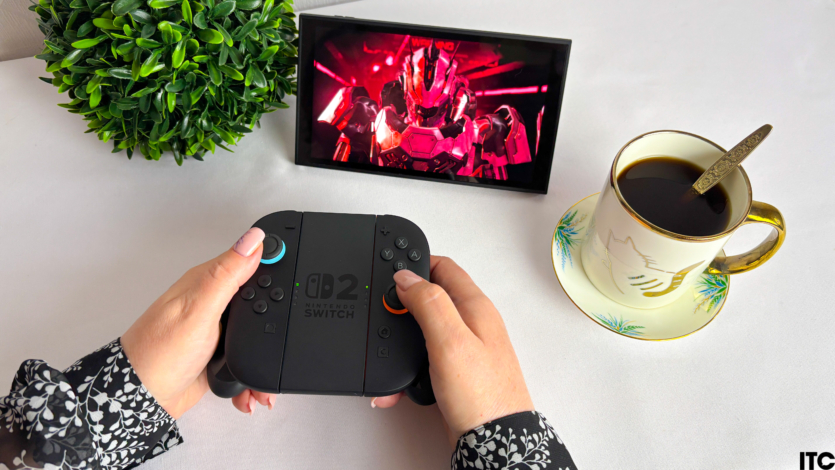

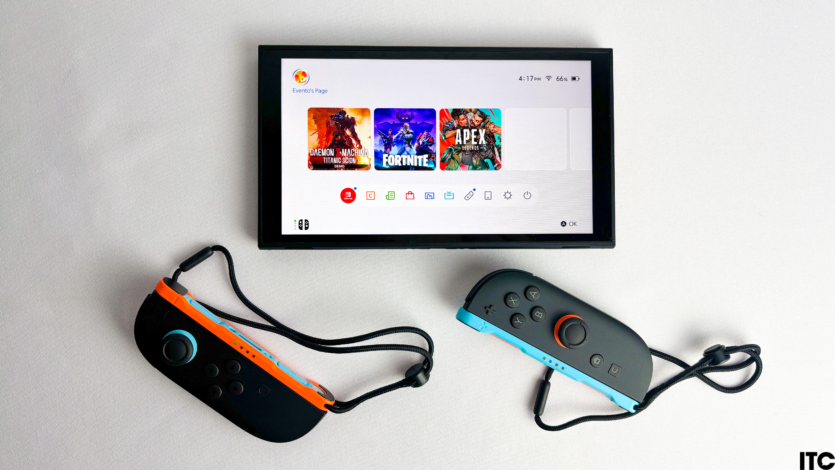
Joycons hide a secret — a full-fledged computer mouse in each hand. This option is suitable for both right-handed and left-handed users. You don’t have to use the attachments, but they provide some convenience. Using a mouse instead of sticks is a lot of fun in shooters. The touchpads in Steam Deck OLED are cool and have a great vibration, but they can’t stand up to even an uncomfortable mouse in a full-fledged game.
In Fortnite, players with mice are immediately visible. This is a kind of legal cheat against players with the first Switch.
It’s hard to find fault with the quality of Steam Deck OLED’s sticks or keys: everything is well made and almost non-binding. The sticks are similar to the Xbox/Windows gamepad that is familiar to many. Yes, it will take some time to adapt. However, if you have had or have this gamepad, you will get used to it quickly.
The same cannot be said for both Joy-Con’s. First, RZ and LZ — are keys, not the usual triggers. They are responsible for the usual LMB in mouse mode. Secondly, RZ, LZ, R, L have a lot of backlash, although all other keys do not. Thirdly, the usual layout of the keys on gamepads has been changed in Switch 2. This is clearly visible in the photo. Therefore, future users will have to get used to it for a long time if they play on other platforms in parallel.
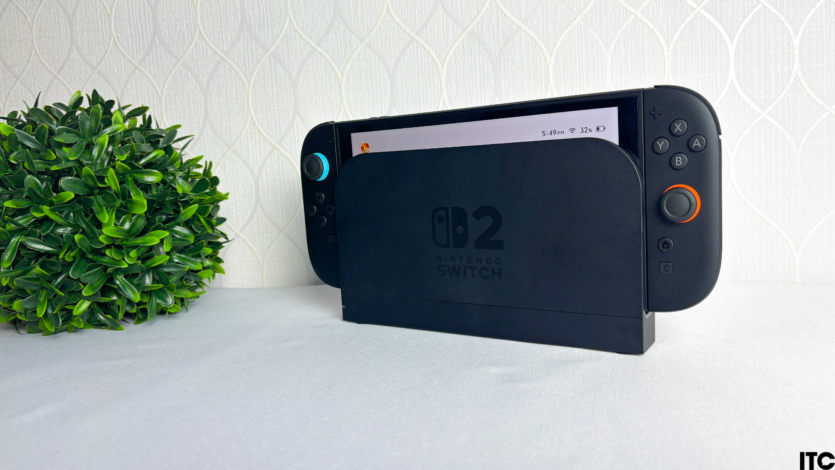
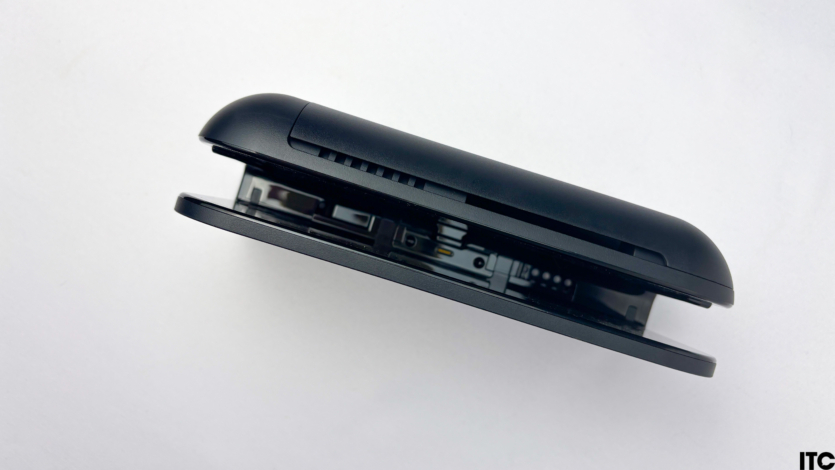
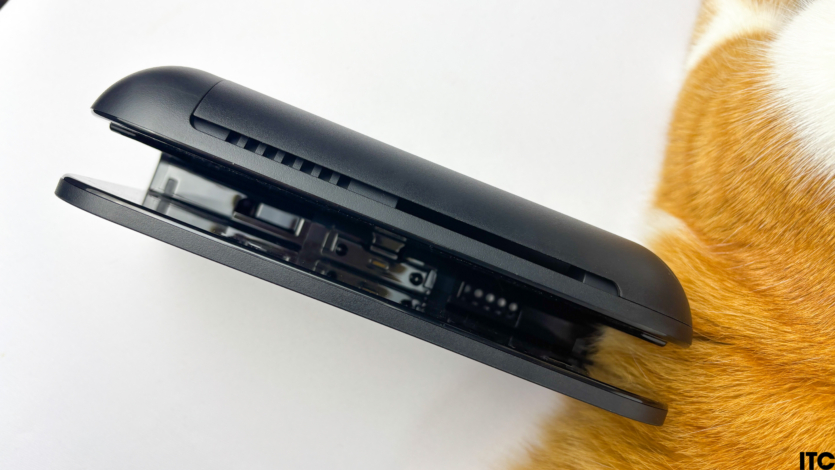
Let’s talk about the docking station. You need it to support 4K TV’s or monitors. It allows you to unlock up to 10 watts of performance. Its main disadvantage is that it is very branded both outside (plastic) and inside (gloss). The console is not involved in cooling, as the built-in fan only cools the station’s internal components. Insert your console correctly into the special grooves (even so, it does not stand “tightly”) and be careful, there are no rubber dampers or other soft materials inside to protect the display from scratches.
Capabilities of operating systems
Steam Deck OLED is running the SteamOS operating system based on ArchLinux. The system is divided into two environments: an analog of Steam Big Picture and a full-fledged Desktop mode. In the first one, you install and run officially purchased games and communicate with friends via the Steam platform. Desktop mode allows you to fully use Linux: install programs (office, photo or video editing, browsers, and others) and modifications, read and write files from external disks or flash drives, run emulators of other consoles or games from other platforms (Epic or GoG). The result is a full PC that is smaller and lighter than a laptop.
Installing Windows via Dual Boot shouldn’t be a problem. Valve suggests installing all necessary Drivers.
Nintendo Switch 2 comes with its own proprietary OS. It is designed primarily to run games (cartridge, online store), communicate between players, and protect the platform from hacking. We tried to connect a mouse and keyboard via a USB hub — they don’t work. Even in the Apex Legends game, they did not work, although the game is available on a PC. The system is suitable for one simple action: turn on Switch 2 and launch the game you want. That’s all you need to do.

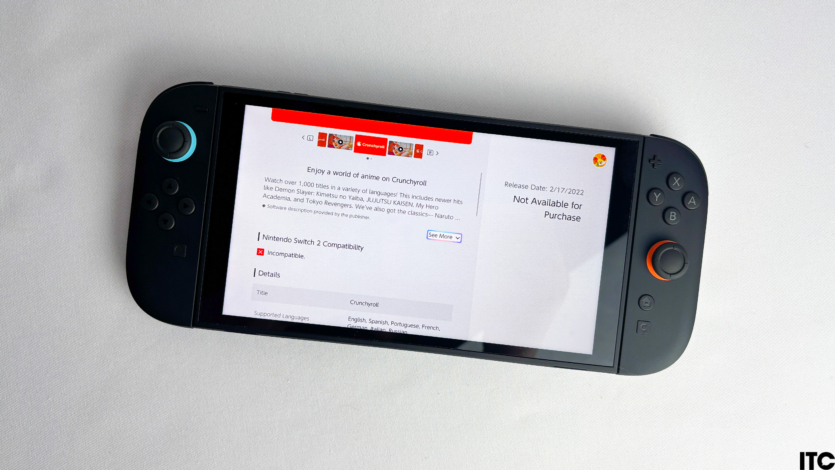
Youtube and Crunchroll are not yet available on Switch 2. Even two months after the release.
Screenshots, game recording, and sharing. During the game, certain random events may occur that the user wants to record. We will analyze this issue on both platforms.
In Steam Deck OLED, to take screenshots, you need to press Steam + R1. There are two approaches to recording that you need to choose in the Settings:
- Background recording — automatically records the game and stores the last 120 minutes of gameplay;
- On-demand recording — clicked and absolutely all gameplay started to be recorded. Gameplay is recorded thanks to Steam + A. To stop, press again.
You can view the footage in the Multimedia tab, and then send screenshots and recordings (up to 60 seconds) to a desktop PC or smartphone using the Steam application. If you want to upload the video to Youtube or another social network, you need to switch to Desktop mode, open Steam, find the View – Recordings and Screenshots and export to any folder (for example, Video).
On Nintendo Switch 2, you can take screenshots and record clips of the last 30 seconds of gameplay. For this, there is a separate Circle button on the blue Joy-Con. It’s simple: pressing it once saves a screenshot or holds it for 2-3 seconds — a clip. To view your footage, you use the built-in Album, where you can view, delete, and send it to your smartphone using the Nintendo Switch App (iOS / Android) or memory cards.
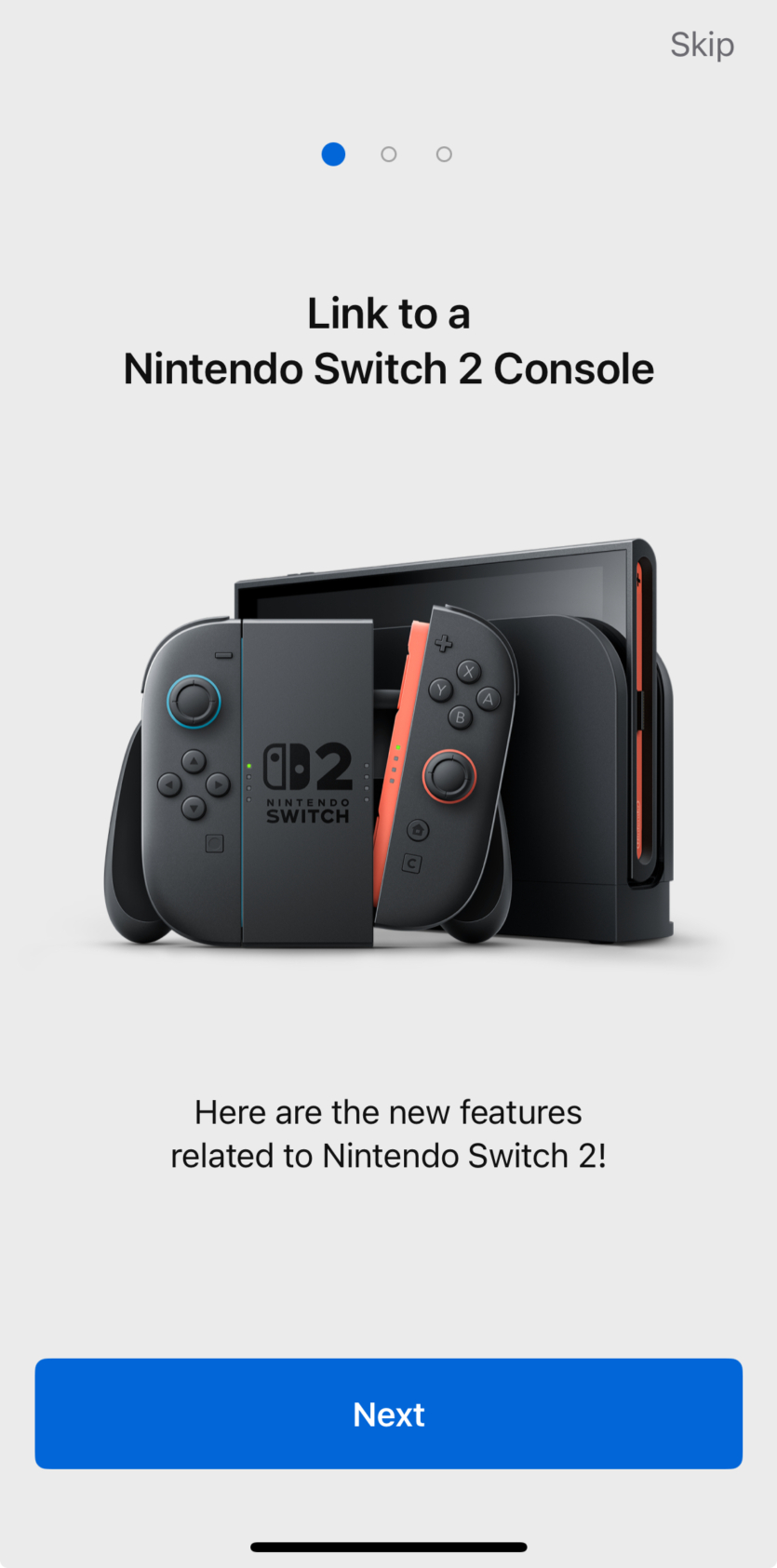
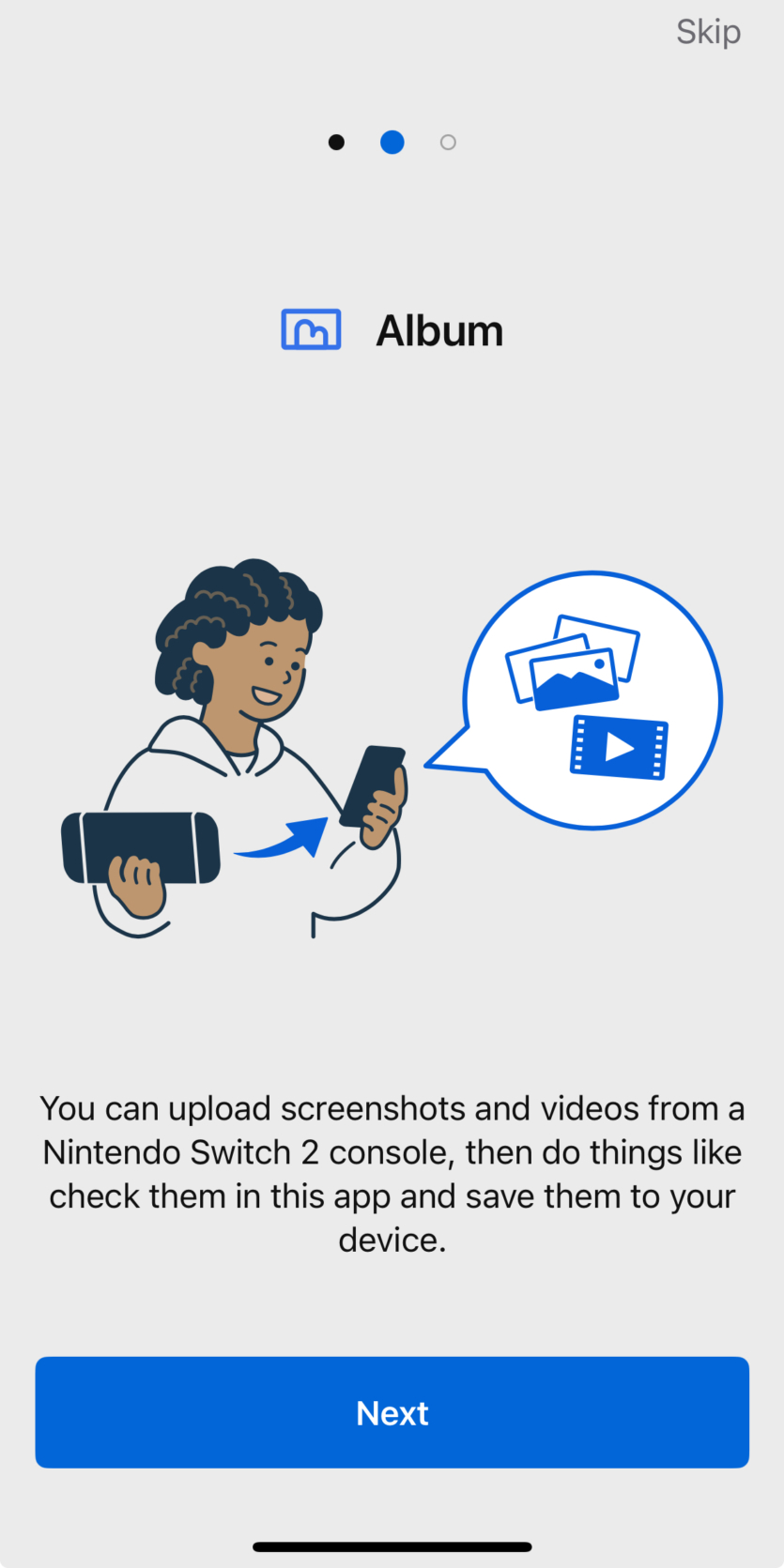

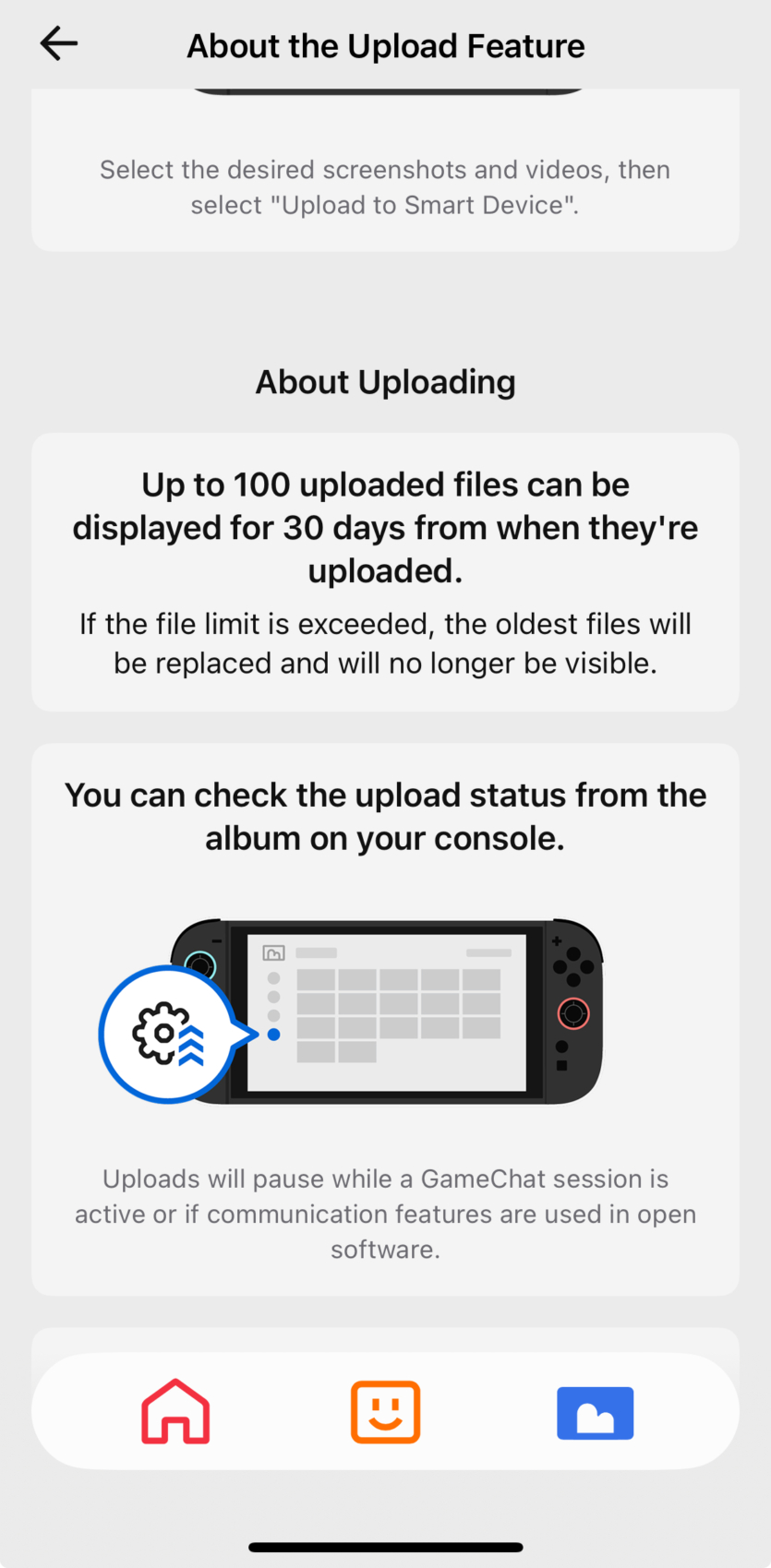
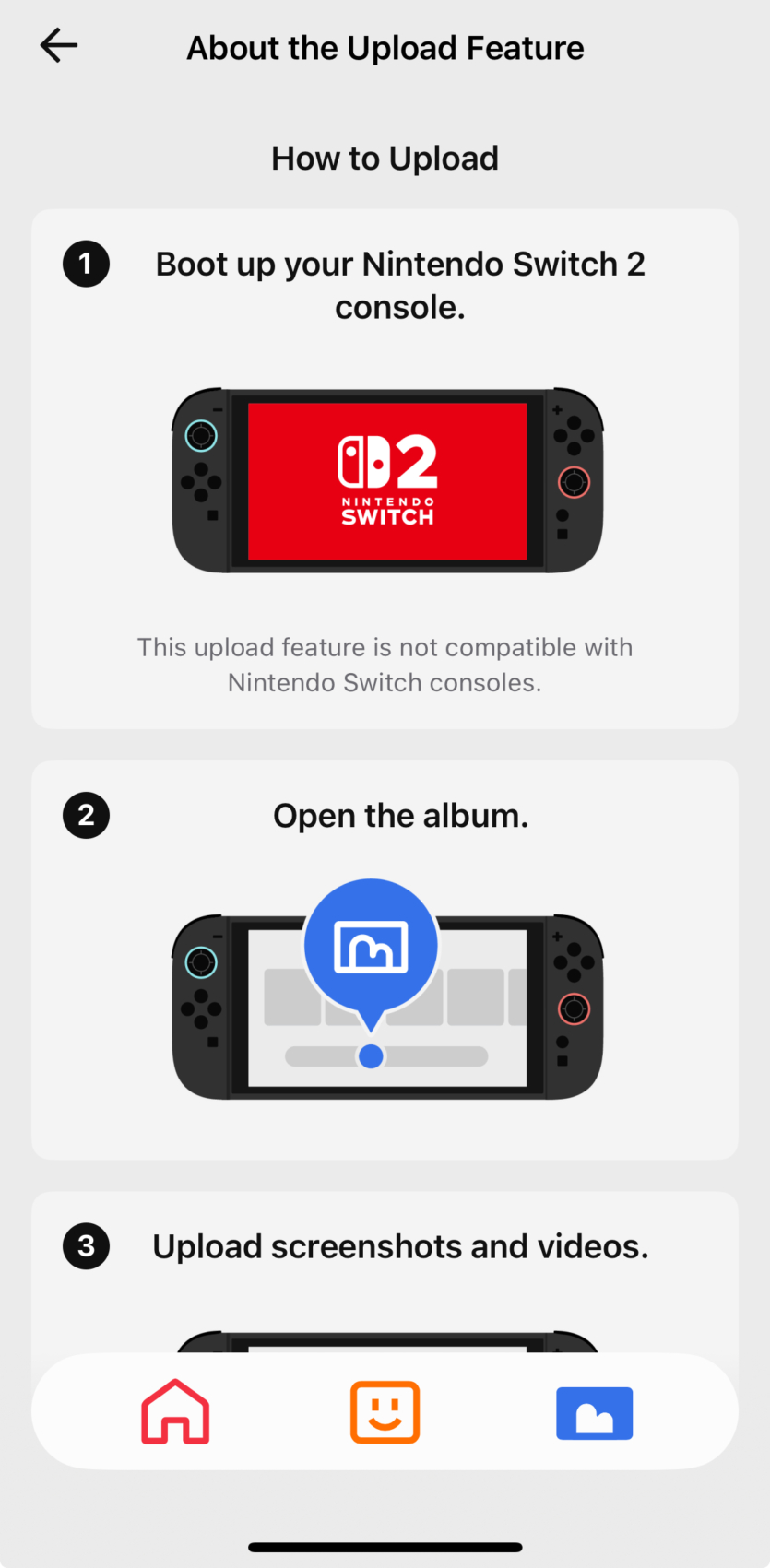
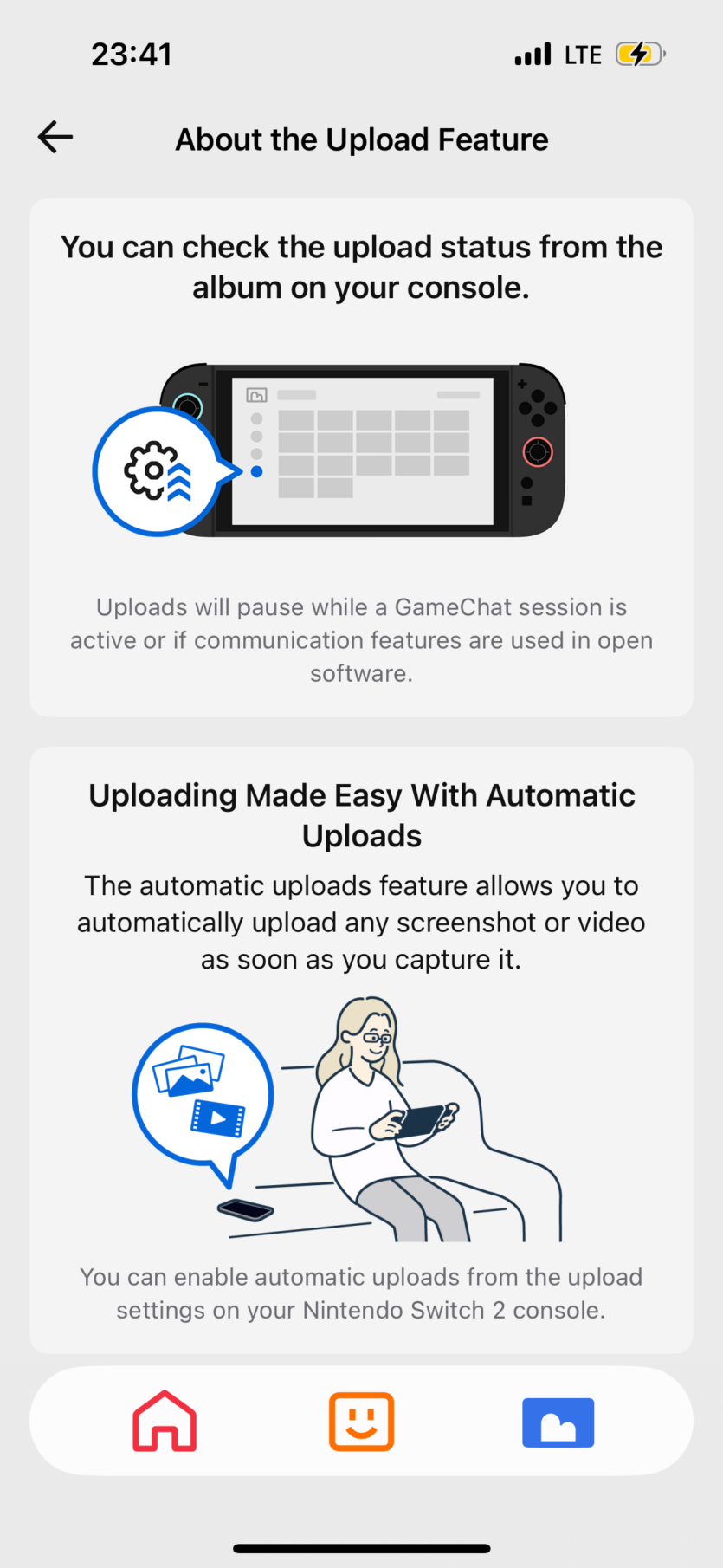
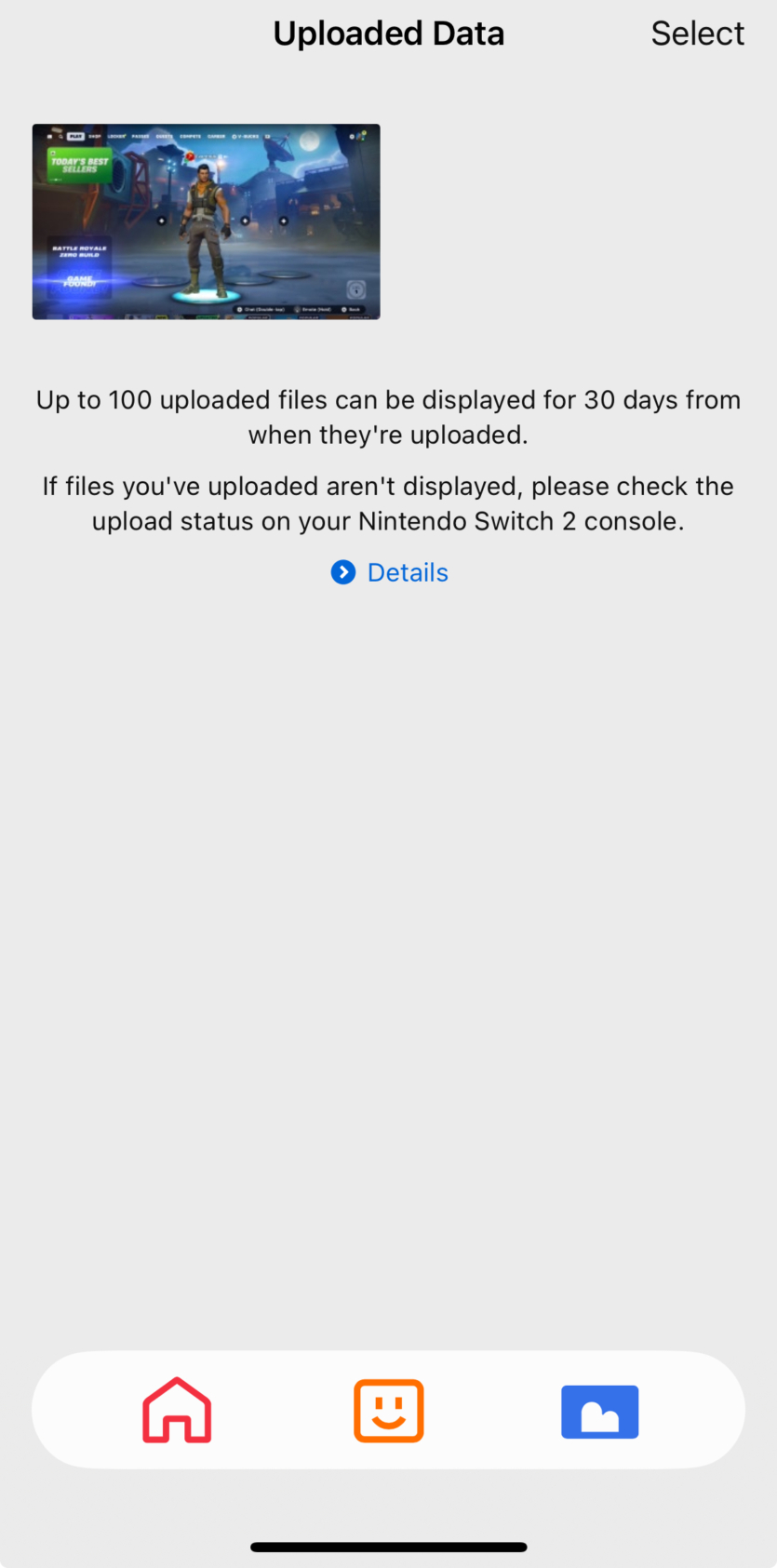

Using the Nintendo Switch App to transfer gameplay has certain limitations: up to 100 uploaded files and 30 days of storage. Keep in mind that they are not deleted from the Switch 2 itself. Clips of Fortnite and Daemon x Machina: Titanic Scion console recorded in 1080p 30 FPS.
Nintendo Switch App is not available for installation on iOS/Android devices if you have an account from Ukraine. You will have to temporarily “move” to Europe or the United States.
Games Nintendo Switch 2 and Steam Deck OLED
This is one of the most important sections for gamers. You need to understand what exactly you want to play. If you want to play Nintendo games, then Nintendo Switch 2 is your choice. The emulation of this console is unlikely to happen in the near future. If you are not interested in Mario, Pokemon, Tamagotchi, Kirby, Animal Crossing, Bayonetta, or other Japanese brands — Steam Deck OLED.
The next question is whether you play multiplayer games not made by Valve itself: Fortnite, PUBG, Apex Legends, and others? Some of these games can be downloaded from the Nintendo eShop (PUBG and Call of Duty are not), but anti-cheats for most online games will not work on SteamOS. Although this seems like a disadvantage, there is no ban on installing Windows on Steam Deck OLED. This is when this “disadvantage” disappears.
Installing Windows solves another problem with SteamOS — there are certain problems with launching games. For example, Silent Hill 2 Remake should be run in DirectX 11 mode (the launch command –dx11), and not in DirectX 12 (-dx12). Hades will offer you to choose DirectX or Vulkan at the first launch (choose the latter). In the famous Clair Obscur: Expedition 33 without unlocking the graphics settings, the game will look terrible and the lights will not work properly. В Killer is Dead you’ll have to edit configuration files to fix video bugs and unlock 60 fps. There are no such problems with conventional consoles.
The principle of “Buy and Play” consoles works well on the Nintendo Switch 2. The Steam Deck OLED needs to be “fiddled with”.
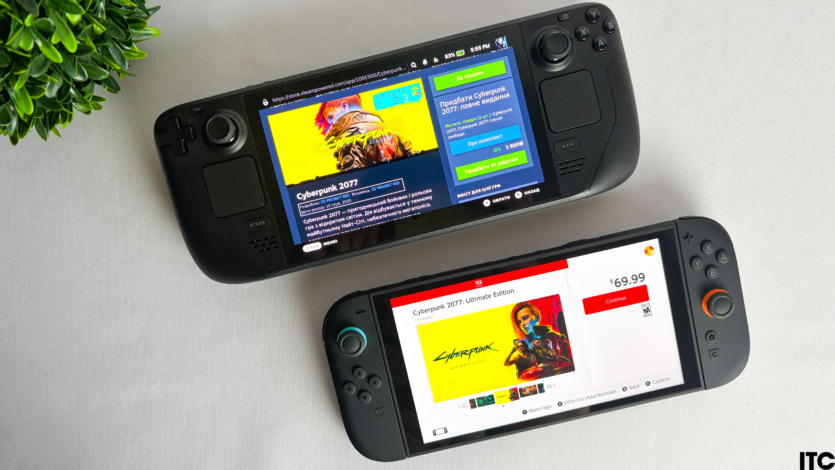
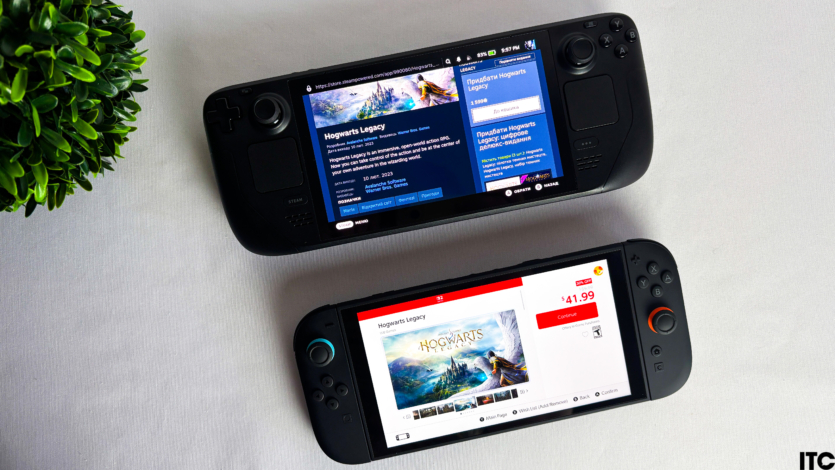

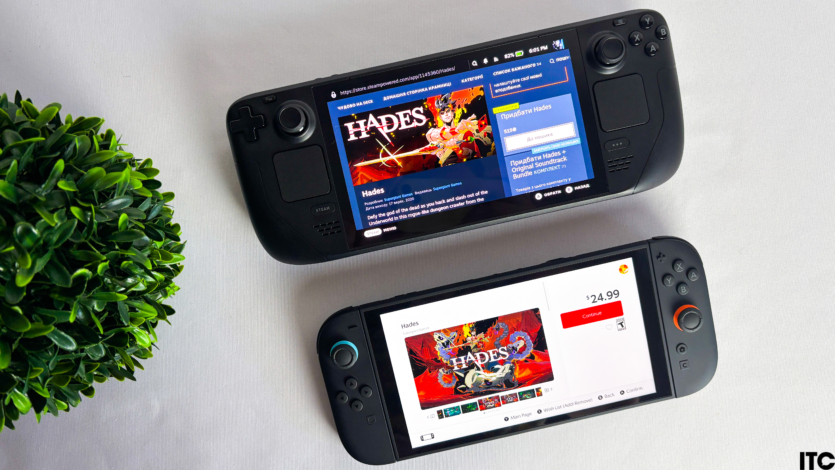
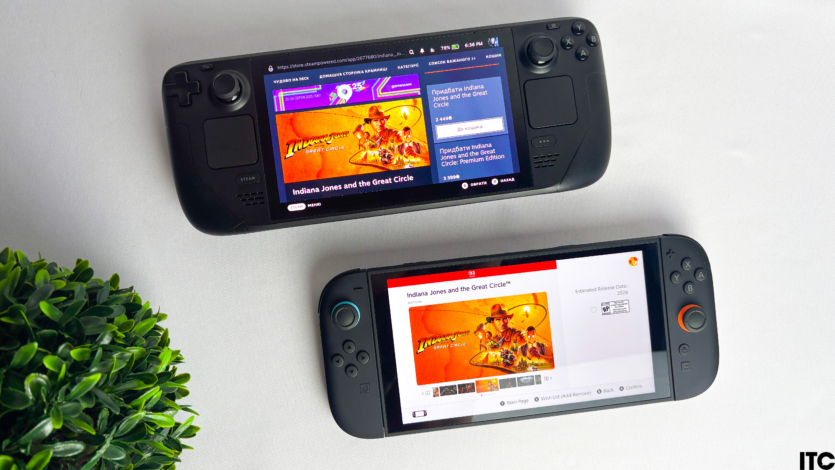
What about game prices? Everything is stable and quite expensive at Nintendo. There are no regional prices, especially in Ukraine. Prices for old updated games for Switch 2 are 70 dollars or euros (from 2900 hryvnias). Buying cartridges doesn’t help much, as they cost about 4000 hryvnias. Let’s look at some prices and compare. Discounts for Nintendo games are usually up to 30%, even for old games. If these are hit games like The Legend of Zelda: Breath of the Wild, you will need to add funds for the updated version for Switch 2. Or pay 70 dollars/euros right away.
| Nintendo Switch 2 | Steam Deck OLED | |
| Cyberpunk 2077 Ultimate Edition | 2900 UAH (70 dollars) | 1930 UAH |
| Hogwarts Legacy Deluxe (Switch 2 version) | 2900 UAH (70 dollars) | 1850 UAH |
| S.T.A.L.K.E.R.: Legends of Zone (Switch 1 version) | 1660 UAH ($40) | 930 UAH |
| Crysis Remastered Trilogy (Switch 1) | 2070 UAH ($50) | 680 UAH |
| Hades (Switch 1) | 1035 UAH ($25) | 515 UAH |
| BioShock: The Collection (Switch 1) | 2070 UAH ($50) | 770 UAH |
| Furi (Switch 1) | 830 UAH ($20) | 415 UAH |
| Batman: Arkham Trilogy (Switch 1) | 2480 UAH ($60) | 749 UAH |
| Nier: Automata (Switch 1) | 1660 UAH ($40) | 466 UAH |
What Nintendo cannot offer in its console so far is new or popular games from its more powerful “brothers”. Namely, the new Silent Hill f (the updated Silent Hill 2 Remake is also missing), Resident Evil 9, Battlefield 6, MGS Delta: Snake Eater, Clair Obscur: Expedition 33, Forza Horizon 5, Alan Wake 2, Helldivers 2, Gears of War: Reloaded. Nintendo does not have any Resident Evil remakes. All of them are launched via Cloud. This list can be continued for a long time. With Steam Deck OLED, users have every chance to play them.
Let’s take a look at some games and how they run on Nintendo Switch 2. And we’ll pick another one that runs on both consoles.
Fortnite is downloadable via the Nintendo eShop as a separate version for Switch 2. The game weighs about 30 GB. This means that the textures and models are still from the first Switch. The game looks great on a 1080p 60 fps display. Consumes 10-13 watts in both portable and docked modes. It’s better to play with a mouse in Joy-Con, so turn on support for this mode in the settings.
Fortnite is different for both Switch and other platforms. You may experience issues when transferring or syncing data

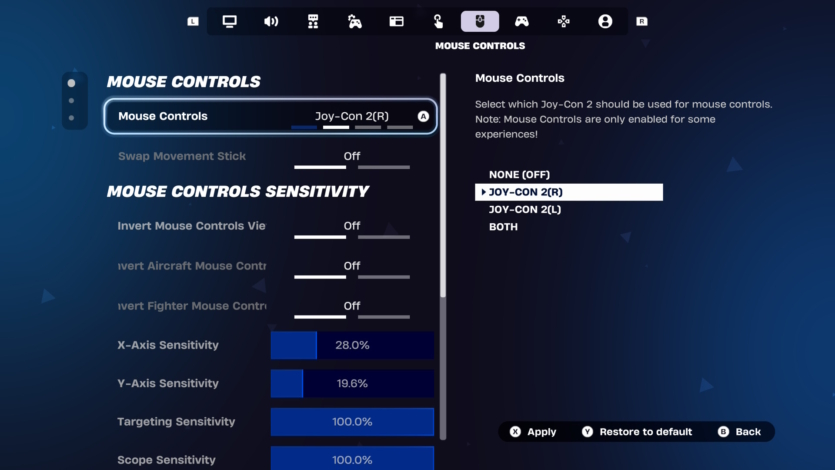
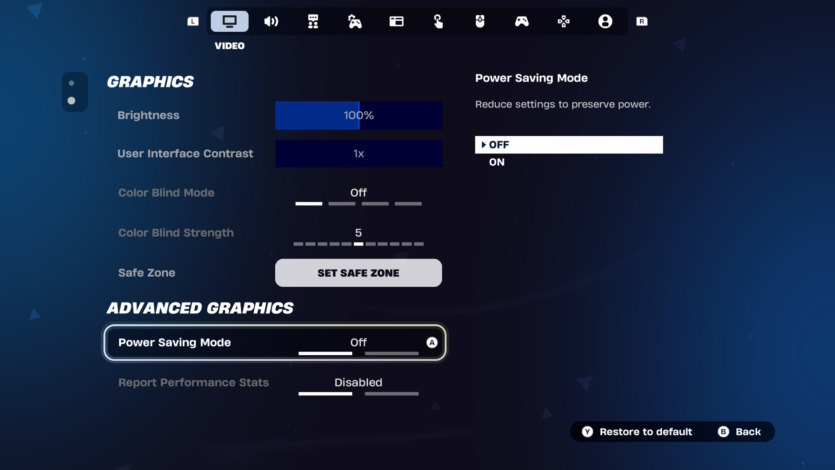
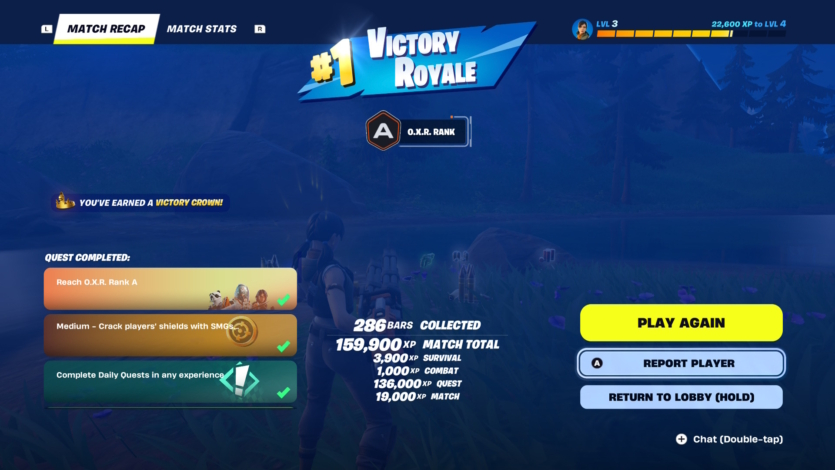
Apex Legends weighs a hefty 80 GB in the Switch 2 version (30 GB for Switch 1). The game consumes 10 watts in the portable and 20 watts in the dock. This results in higher temperatures and increased console fan noise (60-63 decibels). There is a certain effect of blurring the environment when the player sees another character in the game. It is also possible to enable mouse mode.
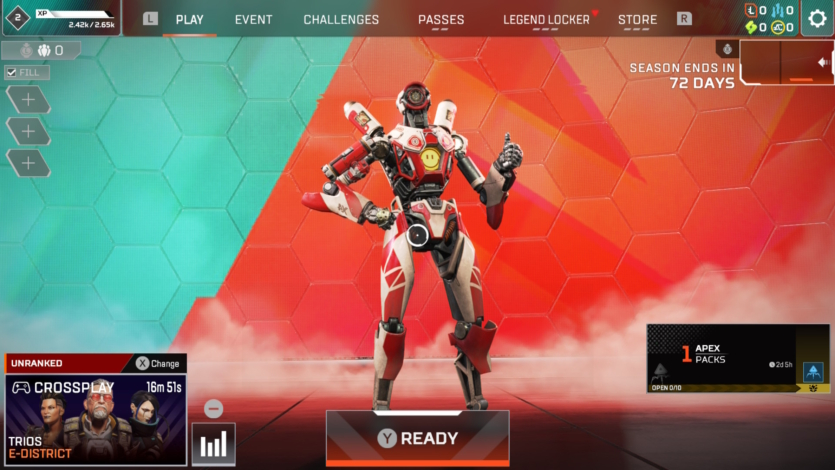
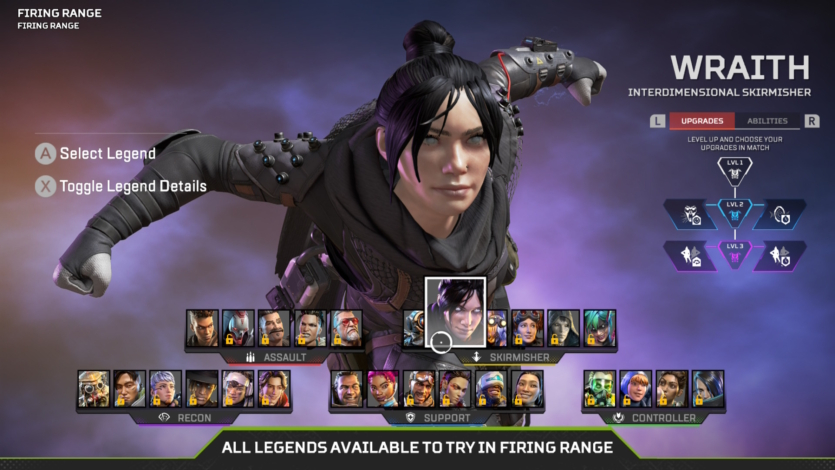
Demo Daemon x Machina: Titanic Scion (20 GB) will be compared on both consoles simultaneously. The game is being released on both platforms, so it’s interesting to try to find the difference in various aspects. The graphics are provided by Unreal Engine 4.
Let’s start with the Nintendo Switch 2. The game runs at 1080p 30 fps with DLSS. It looks good enough for portable mode. But with the dock on the TV, I would like to have a better picture. The reason is quite simple — the console consumes 8-11 W in this game. You can also play on sticks, since the target grabber is added.
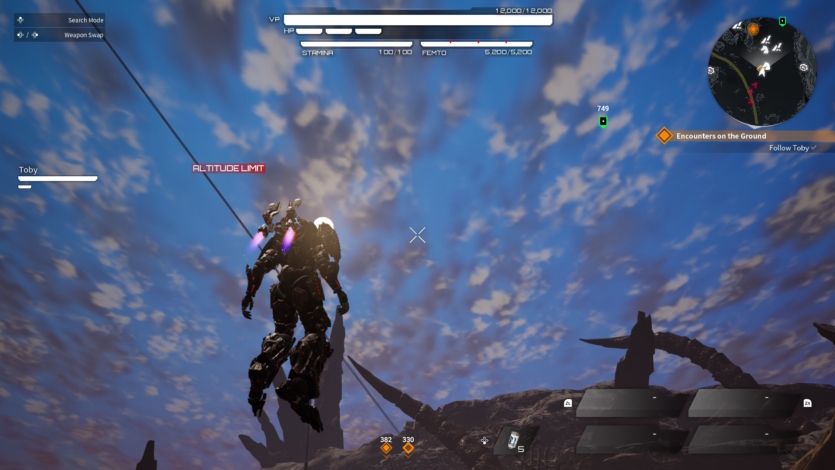
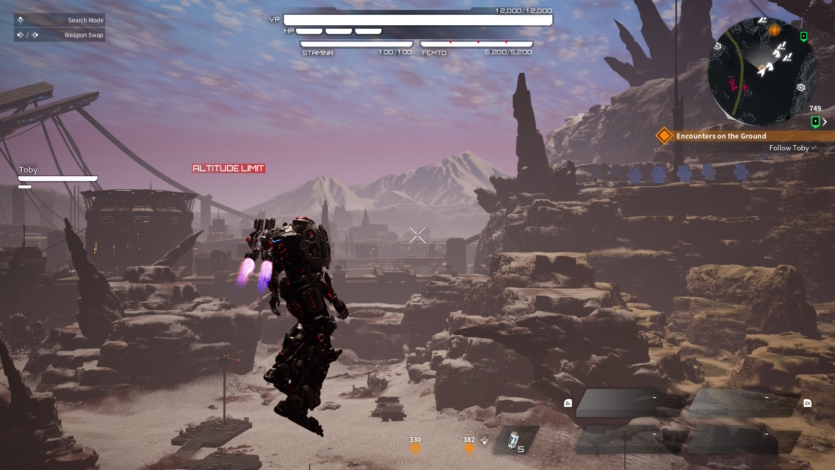
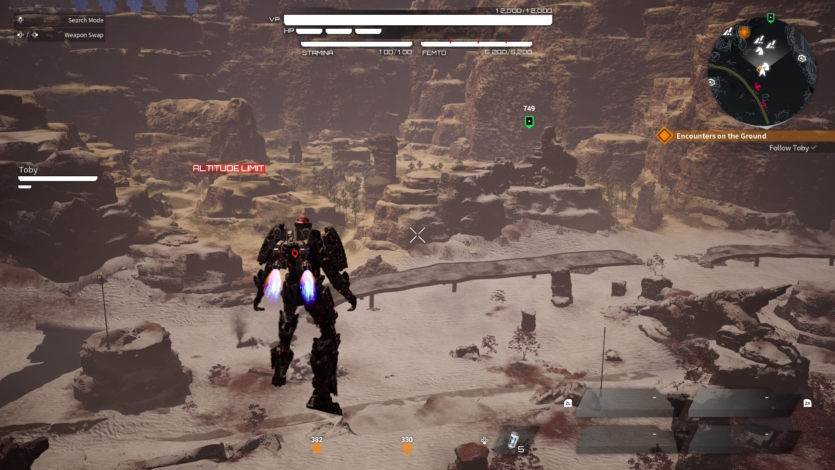
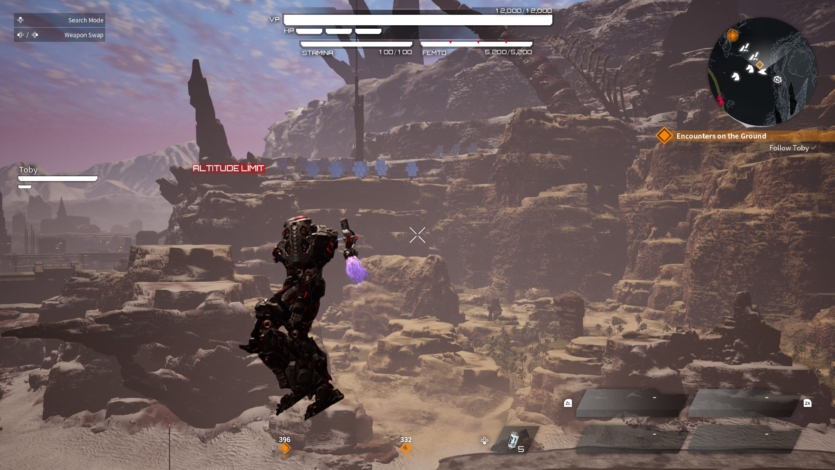
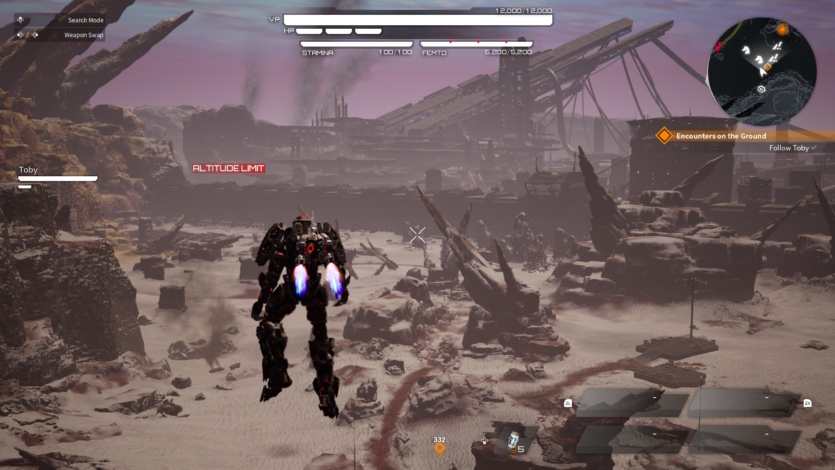
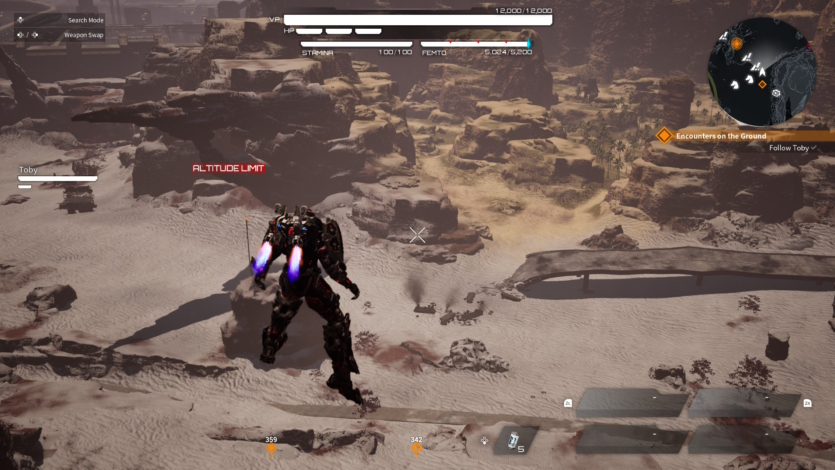
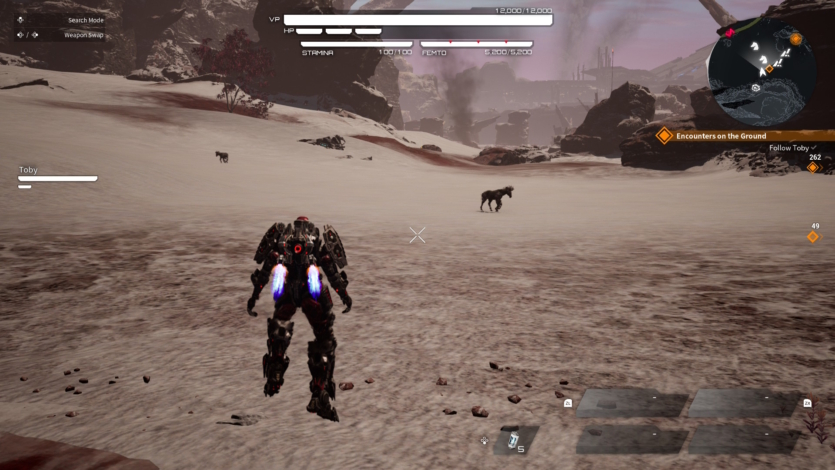
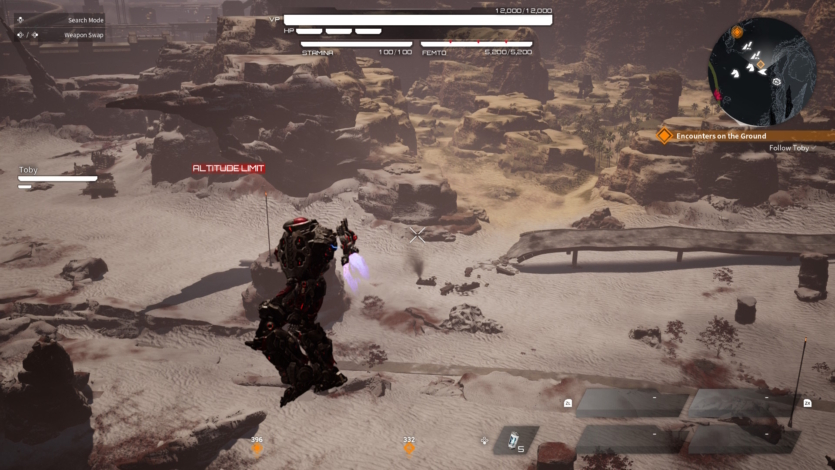
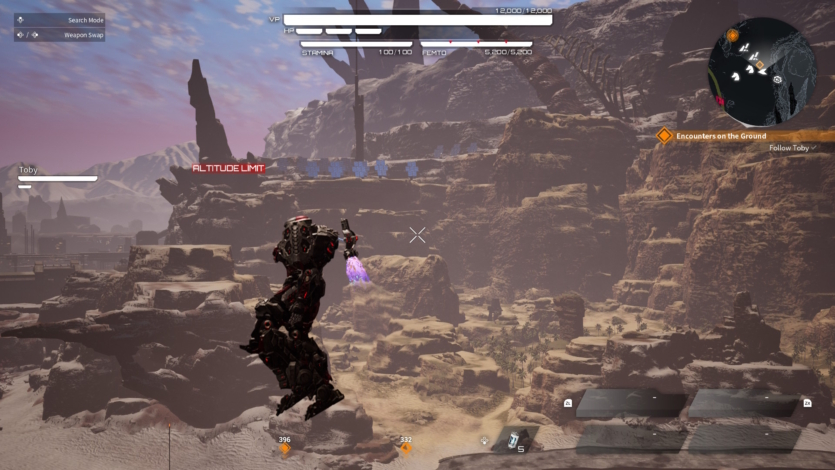
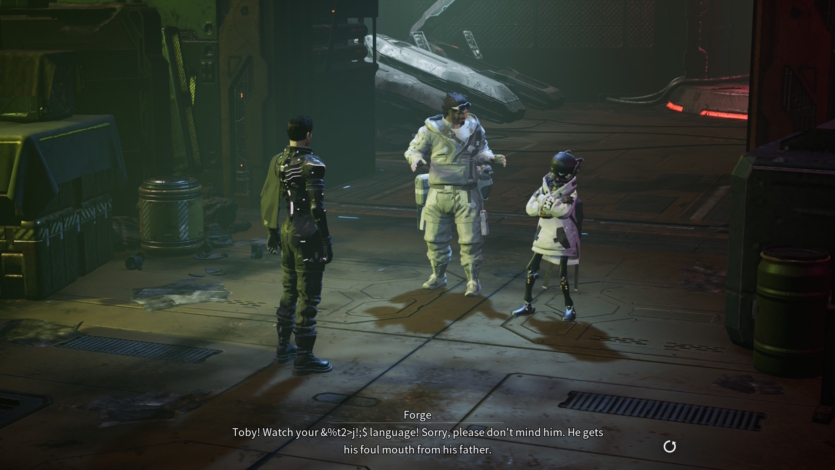
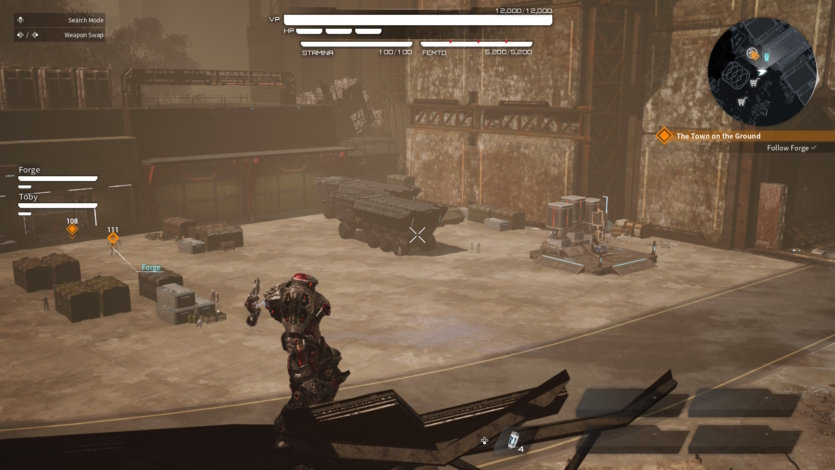
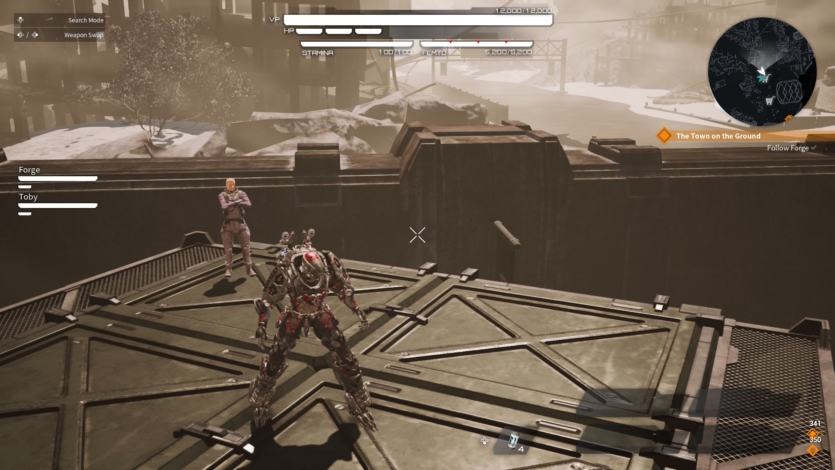
The first problem with Steam Deck OLED occurred at startup. You need to write in the startup parameters -dx12 otherwise the game does not start and generates a error. In this game, we see the disadvantage of low screen resolution: high pixelation, text and keys are very difficult to read. At the same time, we have 720p 30 fps on 10 watts. Therefore, we will have to adjust the graphics.
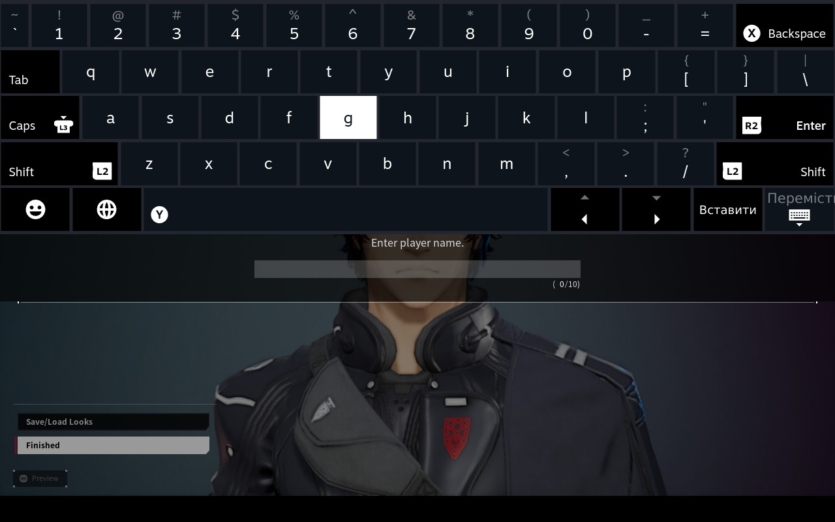
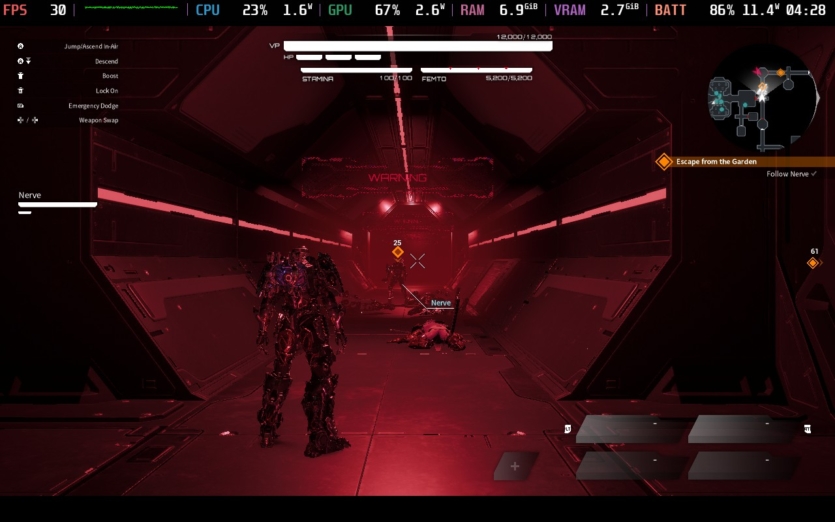
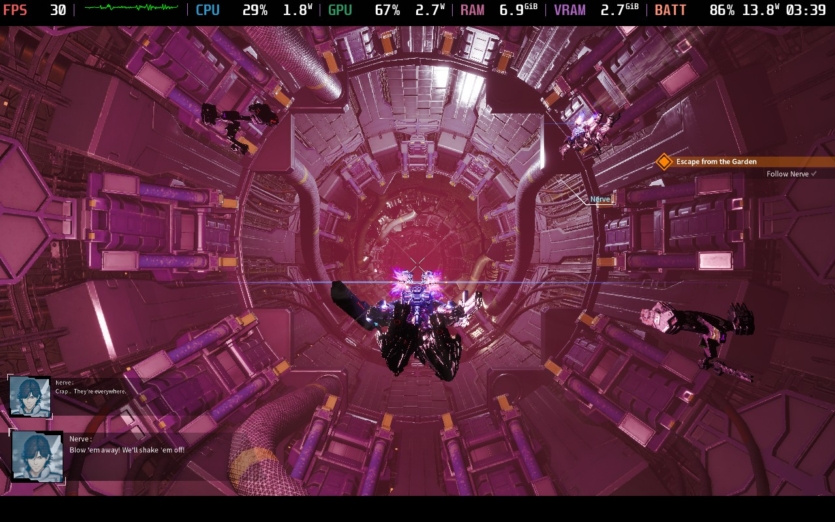
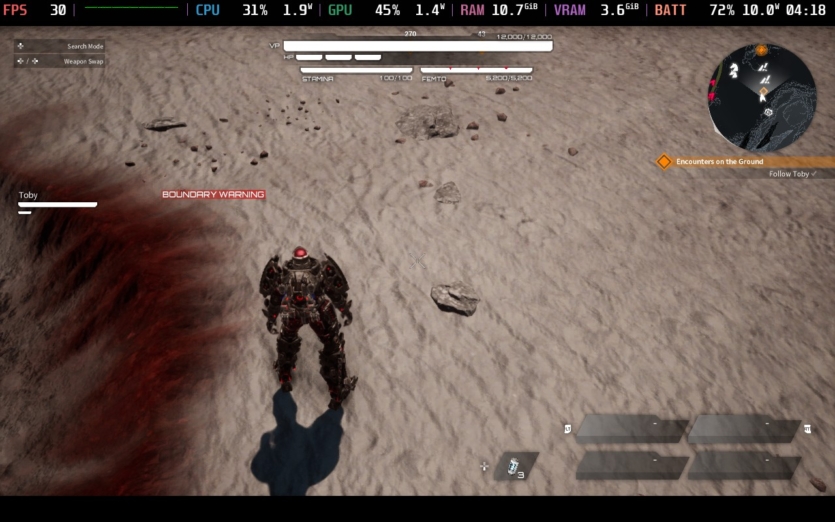
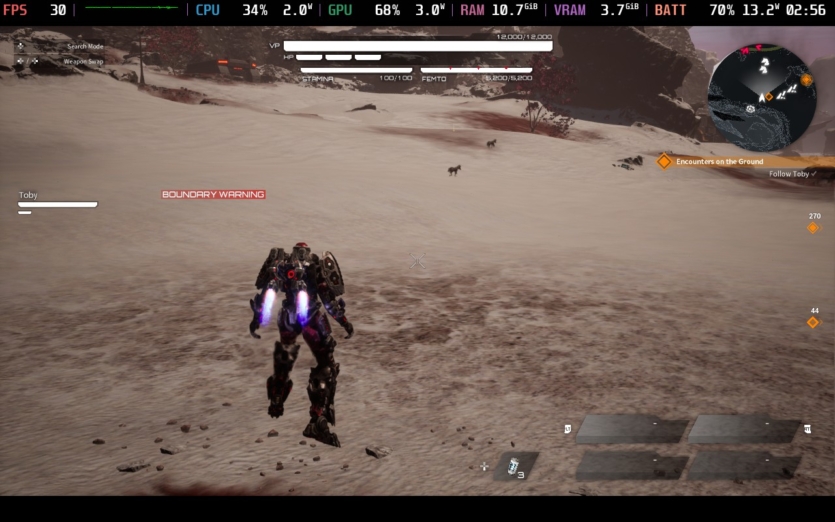
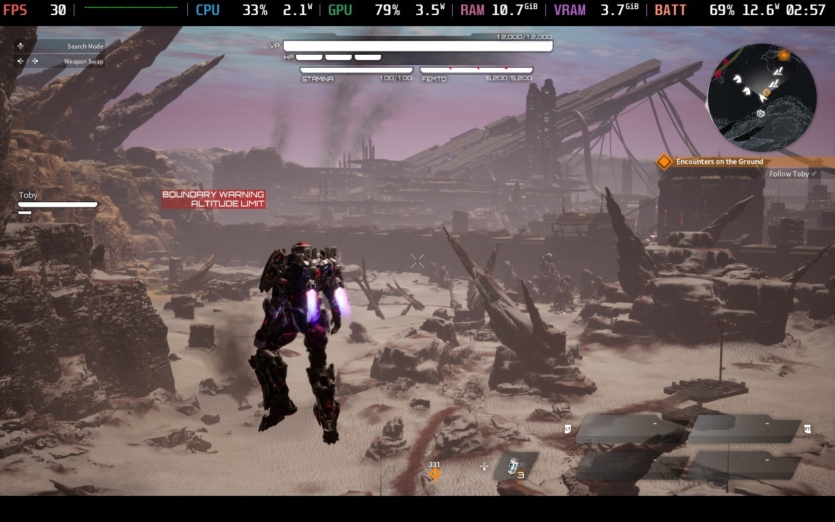
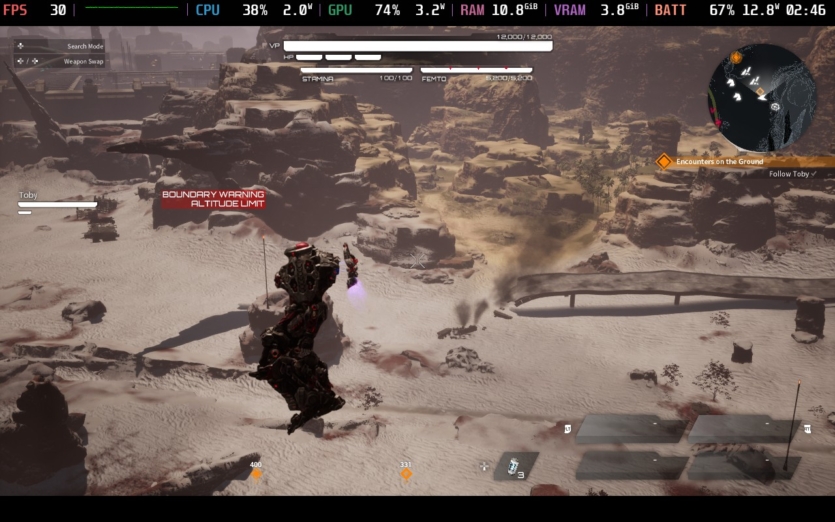
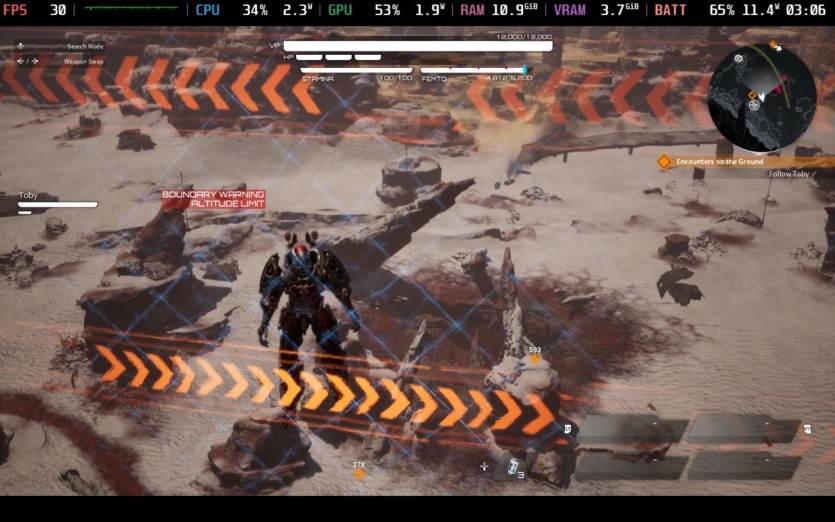
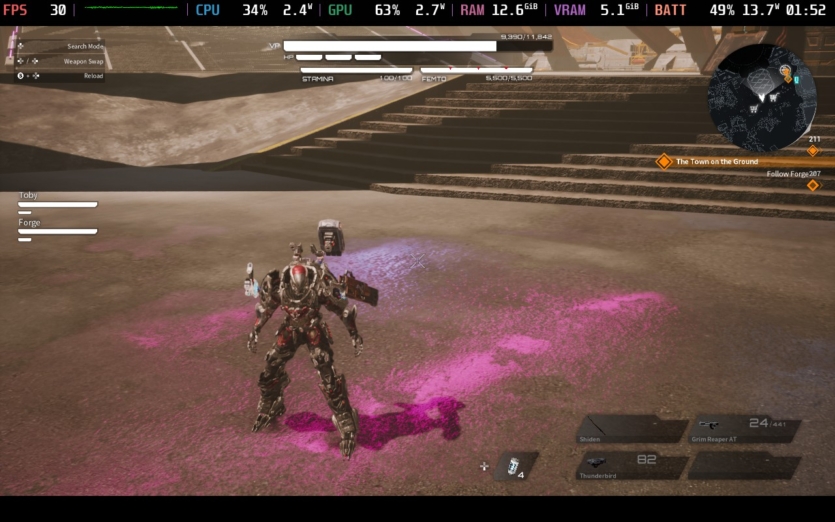
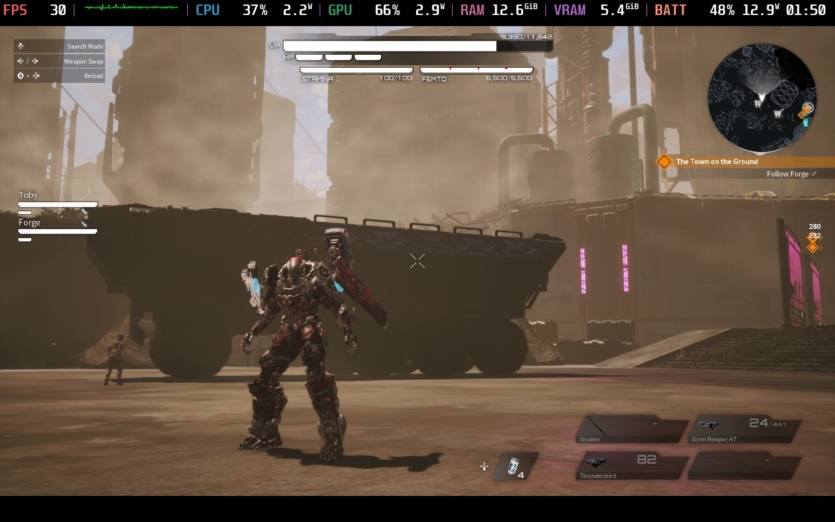
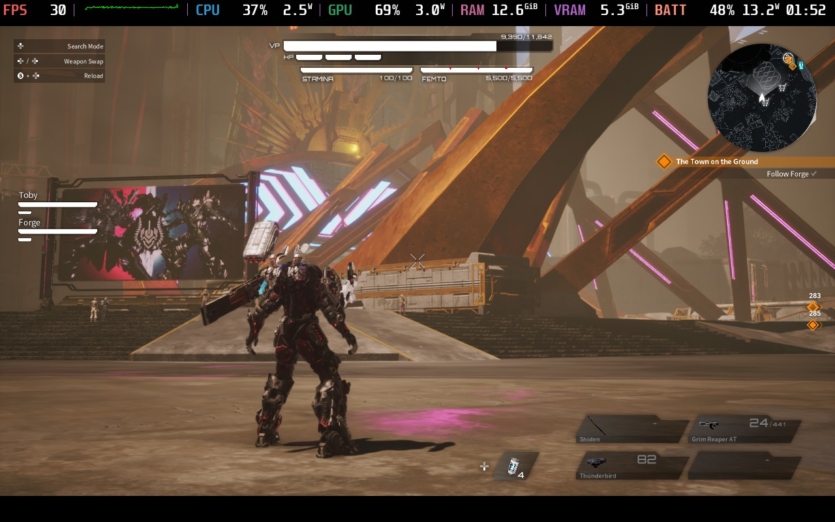
In the game on Deck, you can set the limit from 30 fps to 60 fps. The picture becomes much smoother, and we pay for it with an additional 5 watts (from the basic 10 to 15).
The easiest thing to do is to increase the rendering quality. So under TSR Max, select Quality. Or even select Native and set it to 80, 90, or 100. Unfortunately, the game or game engine is not very adapted to 720p resolution. Because of this, the image without upscalers looks like it has graphic artifacts. Therefore, we leave TSR Max to smooth out the “squares” and reduce system consumption.

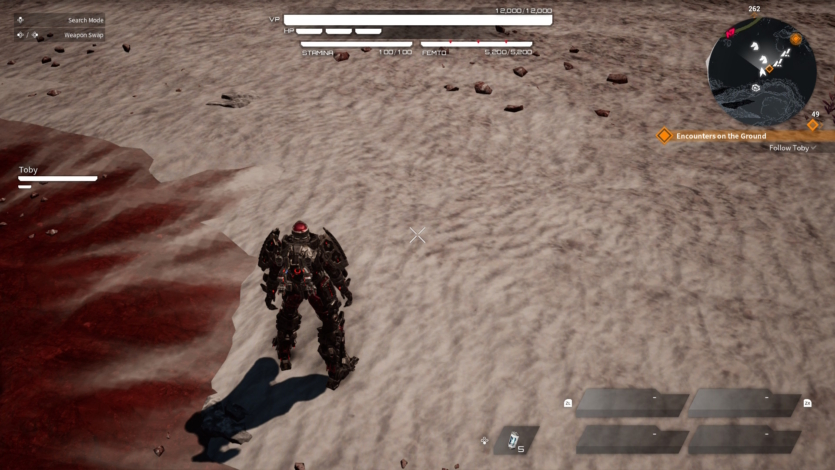
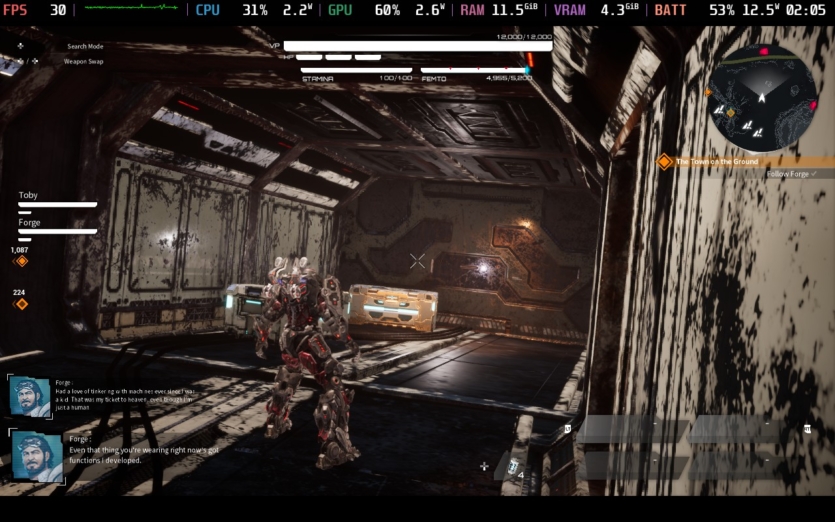
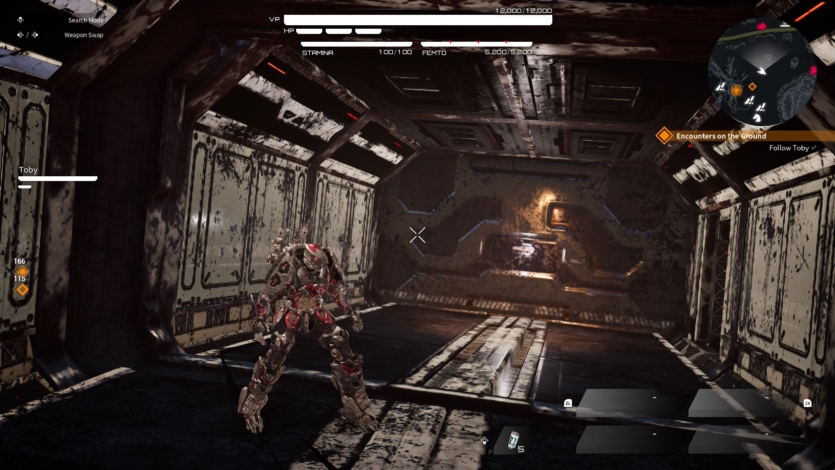
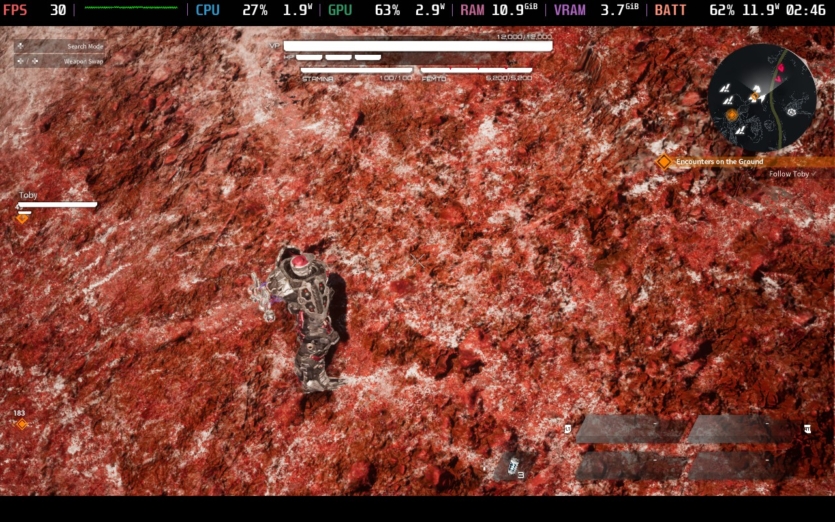


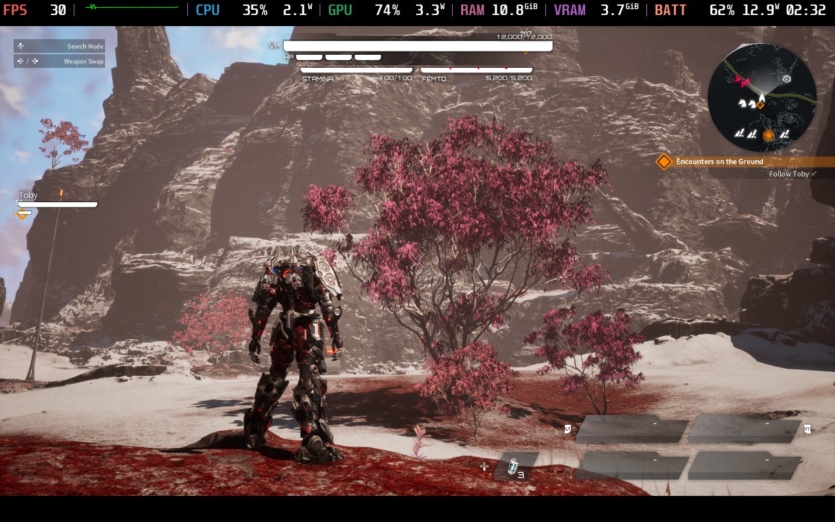


Attentive readers can see two things that are different for both consoles at once: the range of visibility and the quality of textures. For the Switch 2 version of the game, they are significantly lower than for Steam Deck and computers in general.
Speaker sound and noise
Both consoles have pretty good speakers. Their level will be enough for an undemanding music lover or for a simple game of Hades. In general, the difference is that the Steam Deck OLED speakers are louder at both volume settings.
| Nintendo Switch 2 | Steam Deck OLED | |
| Speakers: 50% volume | 69-73 dc | 68-74 dc |
| Speakers: 100% volume | 80-83 dc | 80-87 dc |
| Noise (10 W, Portable mode) | up to 40 dc | up to 40 dc |
| Noise (20 W, Docking station) | 60-64 dc | 55 dc |
The noise situation is almost the same for both of them. The Nintendo Switch 2 consumes up to 10 Watts in handheld mode, so the fan is not audible. Only with the dock in a complex game will it consume 20 watts, which will cause the level to rise above 60 decibels. Due to the fact that Steam Deck OLED is a “station unto itself”, the noise level is slightly lower than that of its competitor. See the table above for details.
Autonomy and power consumption
The Steam Deck OLED has a 50 Wh battery, while the Nintendo Switch 2 has a 19.74 Wh. The small size of the device is a very simple explanation for this battery capacity. Nintendo’s engineers had to reduce the appetites of their console to somehow get more than two and a half hours of portable operation.
| Nintendo Switch 2 | Steam Deck OLED | |
| Charging 1-100% of the time | 2 h 1 min | 1-95%: 1 hr 55 min; 1-100%: 2 h 30 min; |
| Power consumption during charging and play | up to 22 W | up to 49.9 W |
During the first launch and setup of the Nintendo console, a rapid drop in battery power was noticed. But this could be explained by invisible processes or downloading games via WiFi. Only a few days later, the situation did not change, the console consumed 8 watts in “idle” and 10 watts in games. Another theory was the inclusion of 120 Hz display in the OS interface. However, the animations were played at 60 Hz. We were unable to find out the reasons on our own.
Unlike the Steam Deck OLED, the console can download games during sleep. After a while, it turns off to save battery power.
With Steam Deck, the power consumption is quite simple — it is controlled by the buyer of the console. Don’t need 90 Hz? Set it to 60 Hz. Consumes a lot? Manually control the TDP and frequency of the built-in graphics card. Both in the SteamOS system and in games. In addition, you can set a separate profile with the necessary settings for each of them.
| Nintendo Switch 2 | Steam Deck OLED | |
| Fortnite (mouse mode, 10 W) | 2 h 31 min | — |
| Daemon x Machina: Titanic Scion (standard settings) | 3 h 7 min | 4 hours 40 minutes |
| Daemon x Machina: Titanic Scion (TSR Max (Quality), 30 fps) | — | 4 h 13 min |
| Daemon x Machina: Titanic Scion (TSR Max (Quality), 60 fps) | — | 2 h 30 min |
The difference between the batteries is noticeable. A simple example from the Daemon x Machina demo: Titanic Scion with 50% brightness, WiFi and Bluetooth enabled. On both consoles, the consumption is 10 watts. Switch 2 lasts for three hours, while on Deck (default graphics settings) we get a result of almost 5 hours. Such results will be in all 2D games (Hades). In old 3D games (F.E.A.R., Prince of Persia, 8-9 watts), we get about 6 hours of battery life.
Overall, the Nintendo Switch 2 battery is good enough for short trips. Do you need more? Steam Deck OLED. In other cases, a high-quality powerbank will help.
Comparison of the price of consoles
Steam Deck OLED 512 GB price starts from 25728 UAH. If you want to have 1 TB of memory with a matte display, you need to pay from 29699 UAH. For this price, we get a somewhat large, but full-fledged gaming platform with the ability to do more than just play games.
Cost Nintendo Switch 2 is from 22099 UAH. At the same time, the website Click.ua can be purchased for 22199 UAH. For a set with the game Mario Kart World, you will have to pay 22599 UAH. This is clearly more profitable than buying a game separately. Prices for the console seem reasonable, as games reveal the functionality of the console.
Conclusion
The two consoles belong to different worlds. Nintendo Switch 2 continues to expand on the trend set by the first generation Switch — play anywhere, but pay a high price for games. At the same time, you get games with addictive or unique gameplay for the whole family that you can’t get almost anywhere else. Switch 2 is more of a device that adds exclusives to your game collection than a replacement for traditional PCs or large consoles.

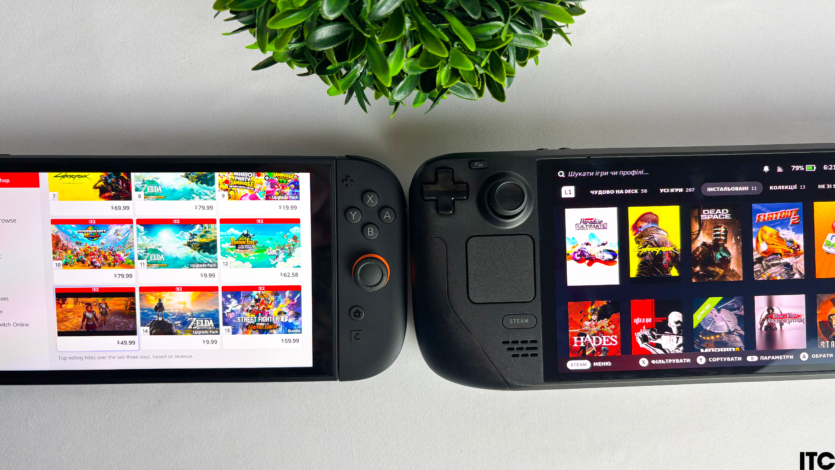
The Steam Deck OLED represents something completely different — the games you’ve been playing all your life on regular computers or laptops. Yes, it’s not exactly convenient for constant travel. However, it has several immediate pros and cons that are offset by one factor — your Steam game library, which you’ve been accumulating for years, is physically in your hands. Steam Deck OLED can be anyone in the hands of the user. This is both attractive and repulsive.
Other modern “portable monsters” have better internals than both heroes of the review, but they have their own plus and minus: better performance at the cost of a short battery life. In addition, their prices are higher. That’s why Steam Deck OLED and Nintendo Switch 2 are the favorites among consumer portable consoles.

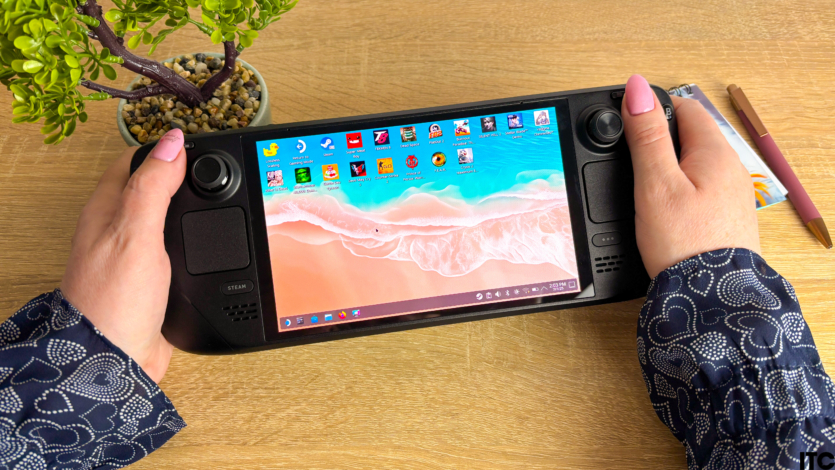
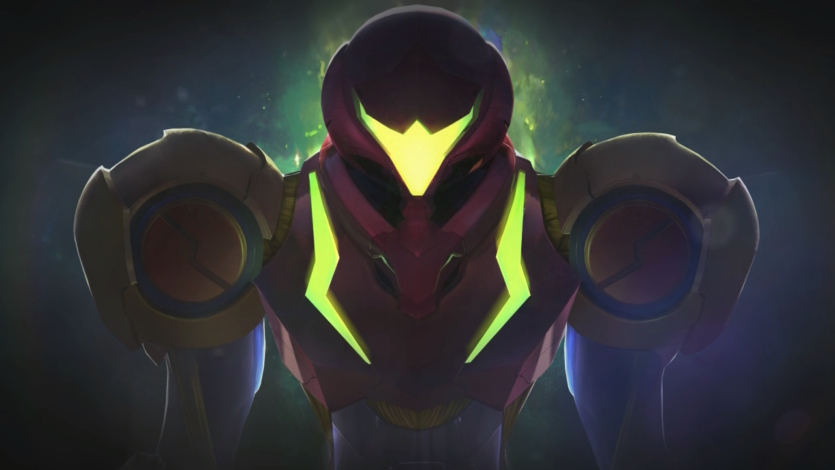
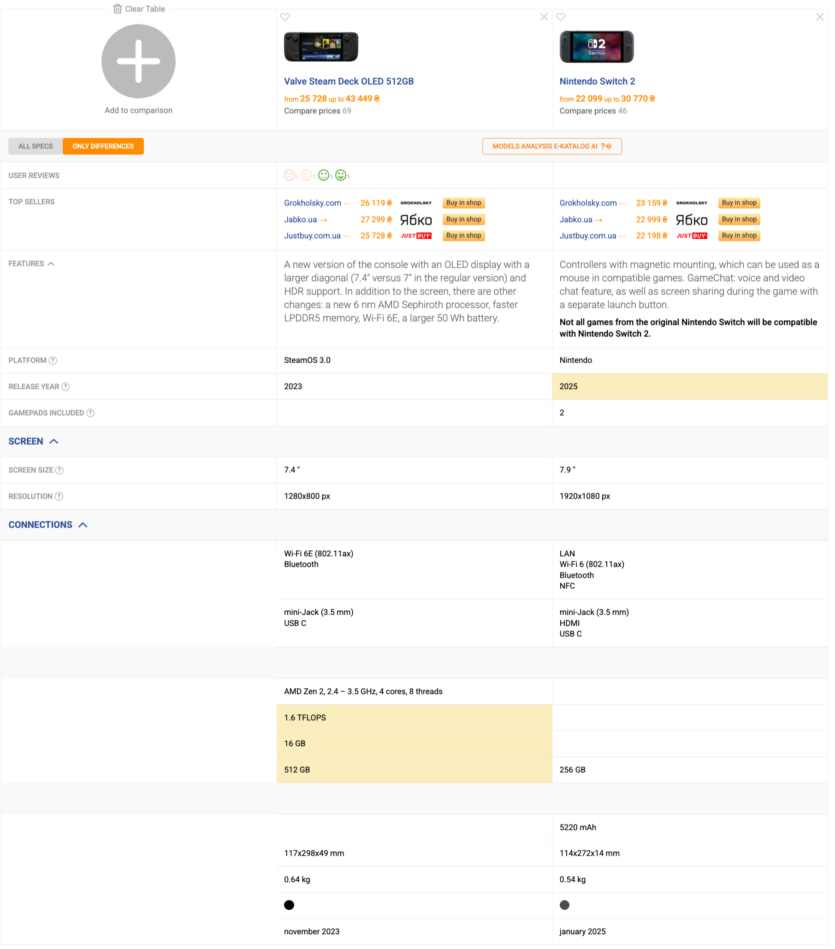
Spelling error report
The following text will be sent to our editors: